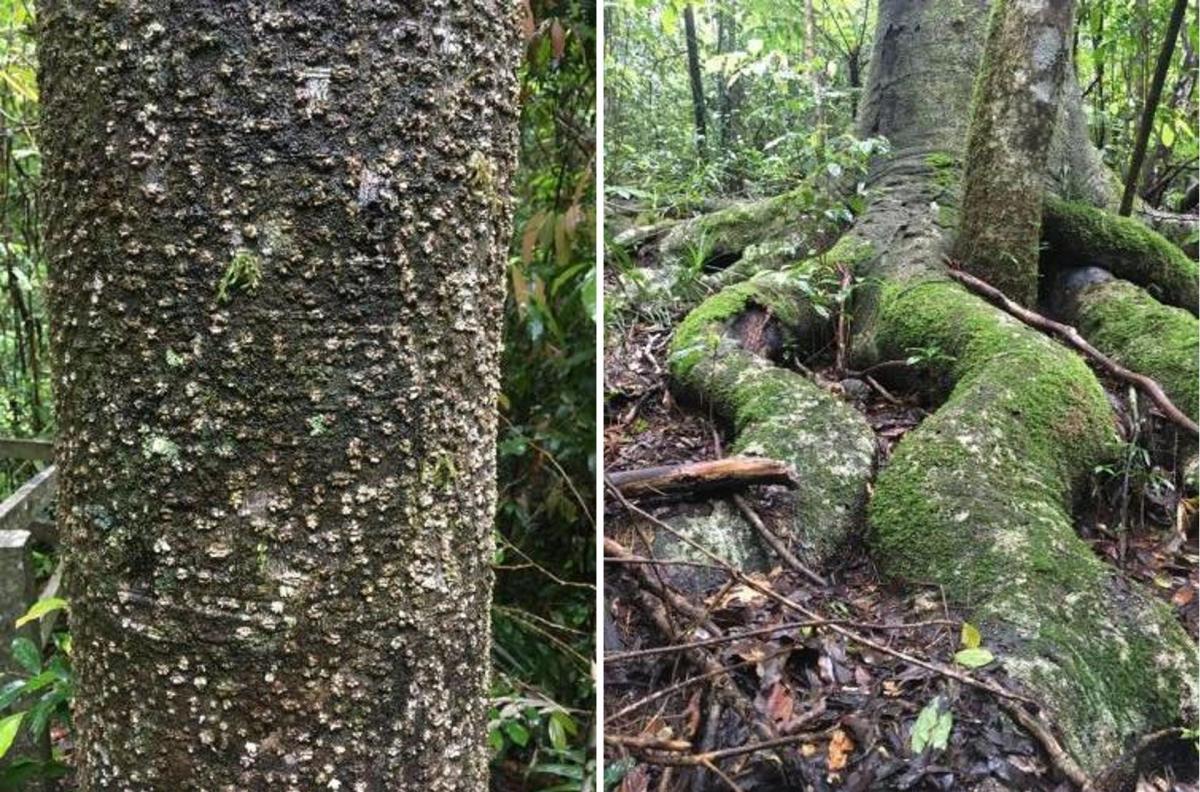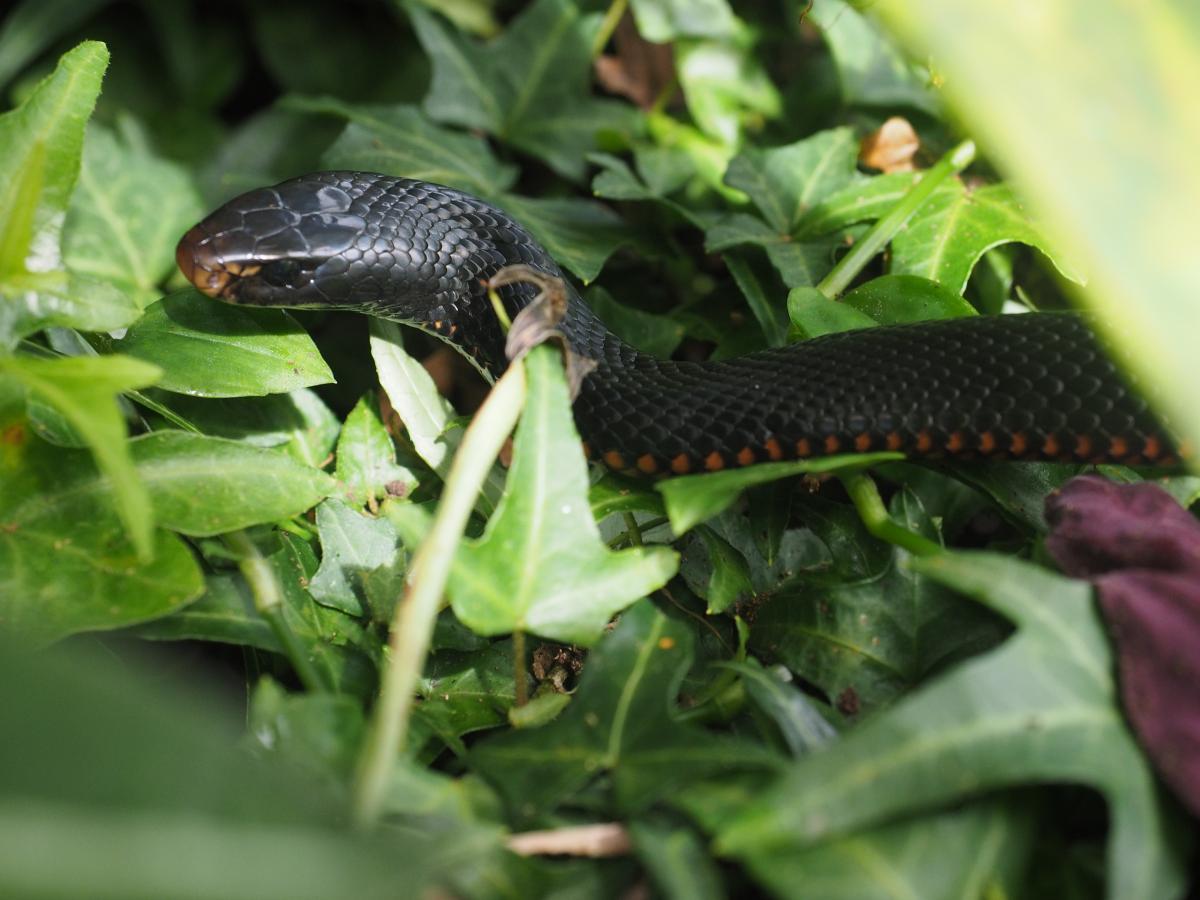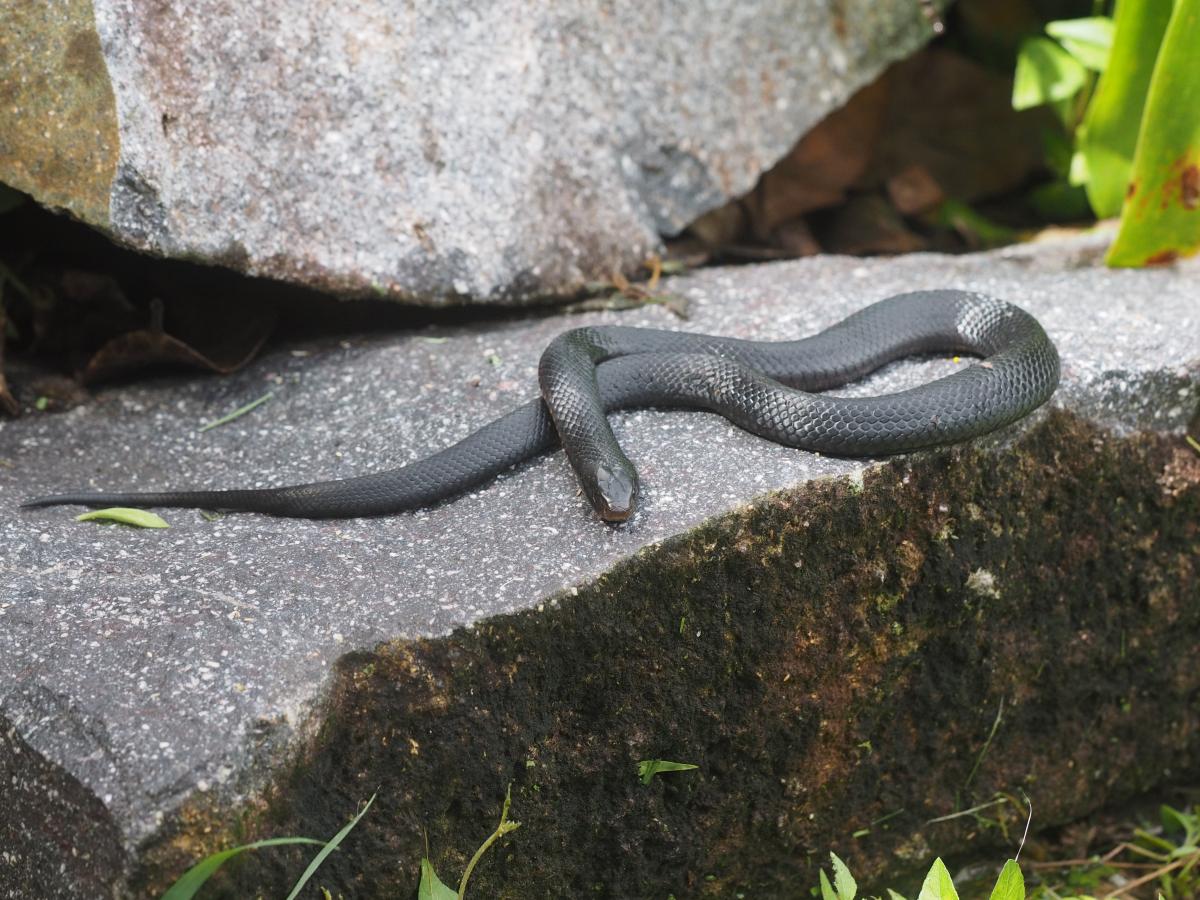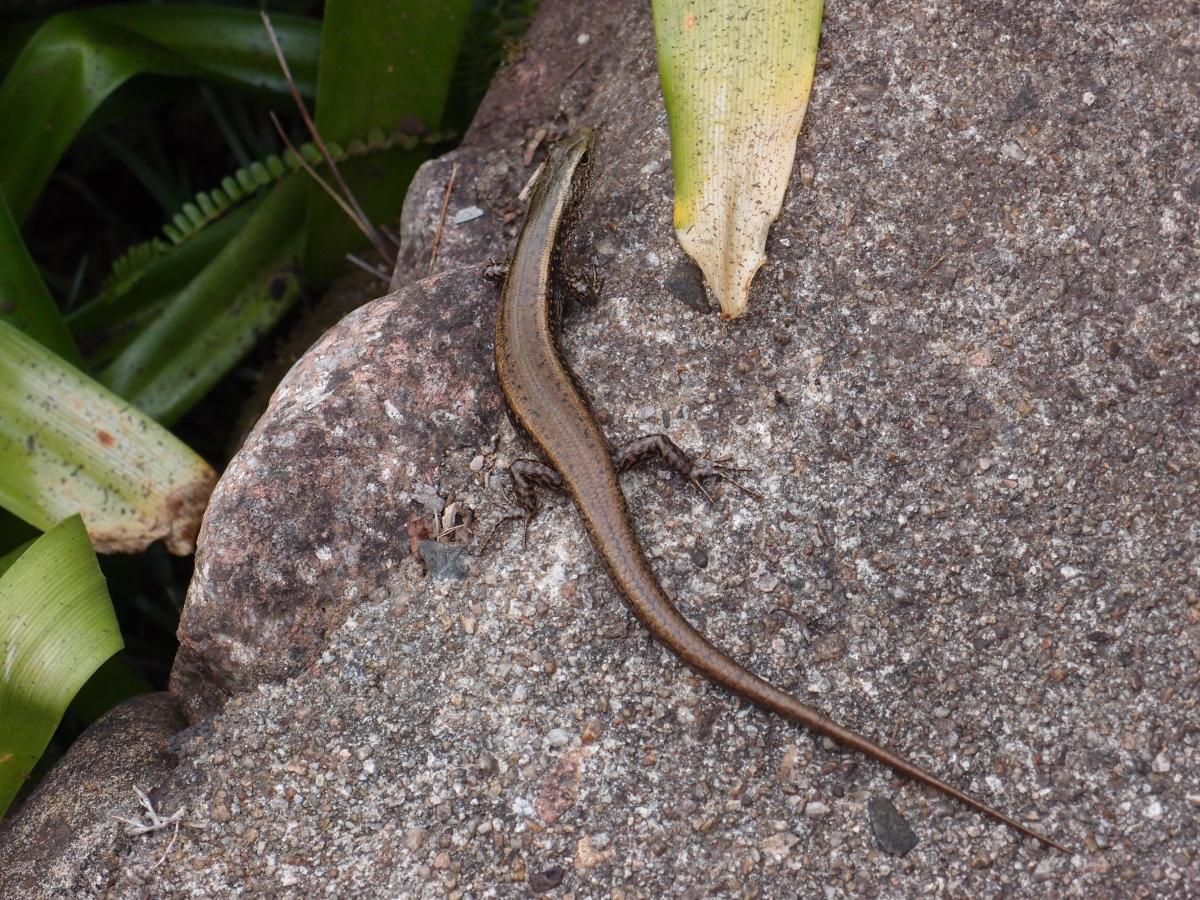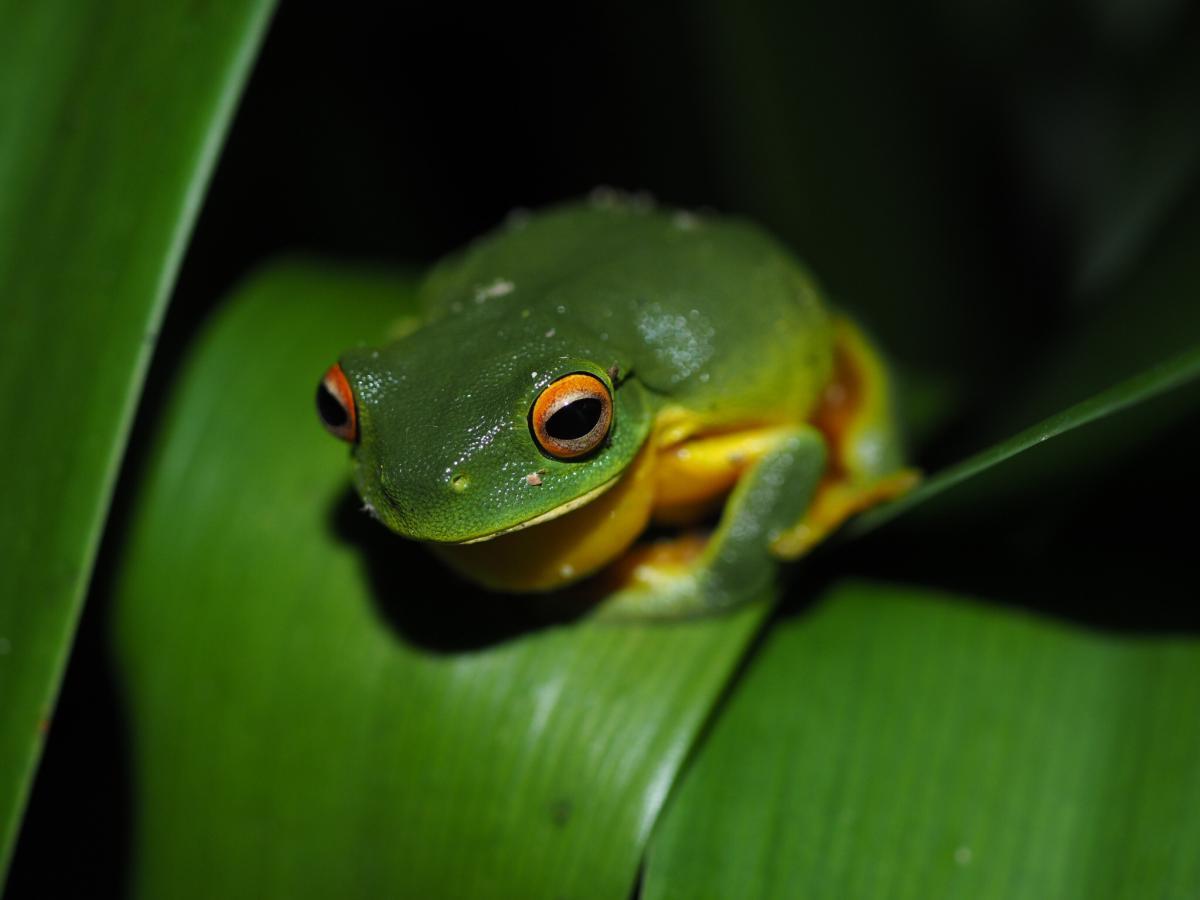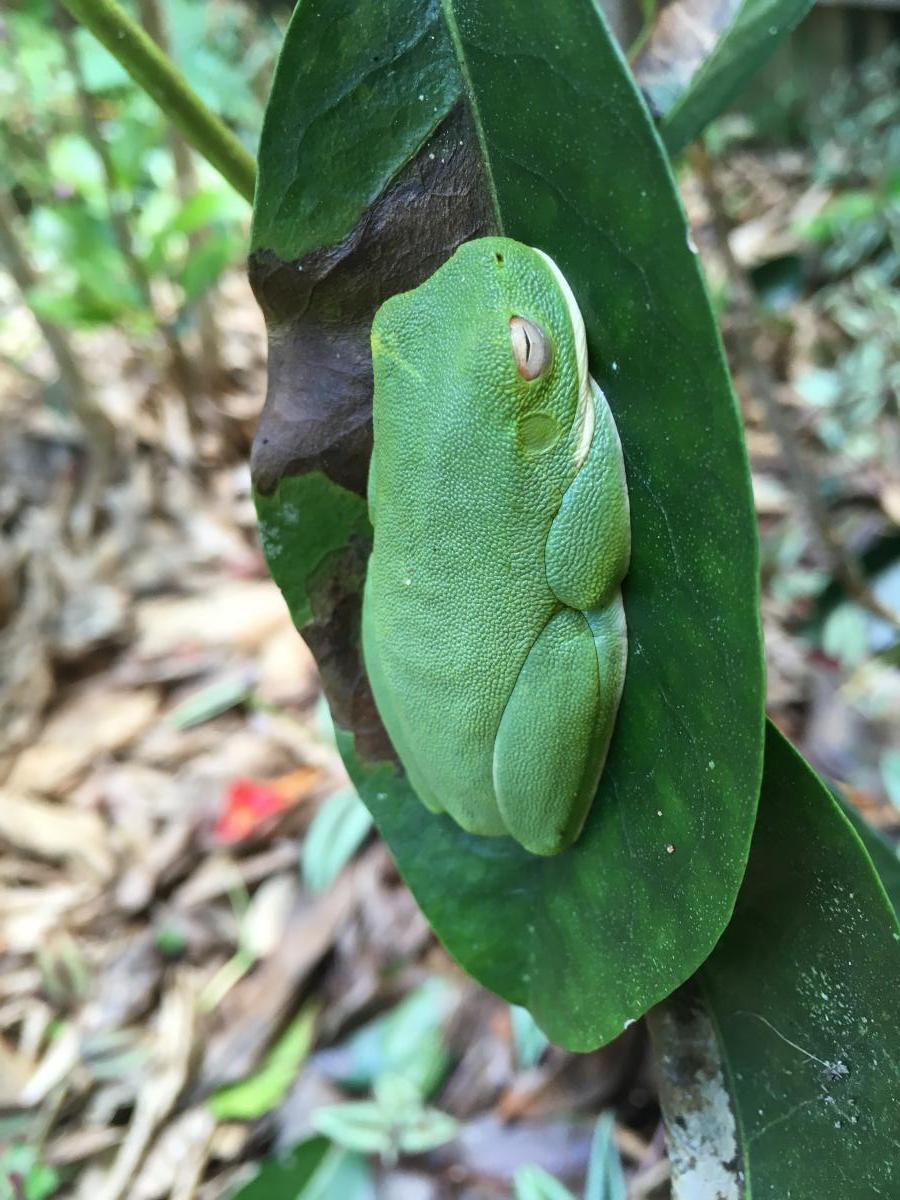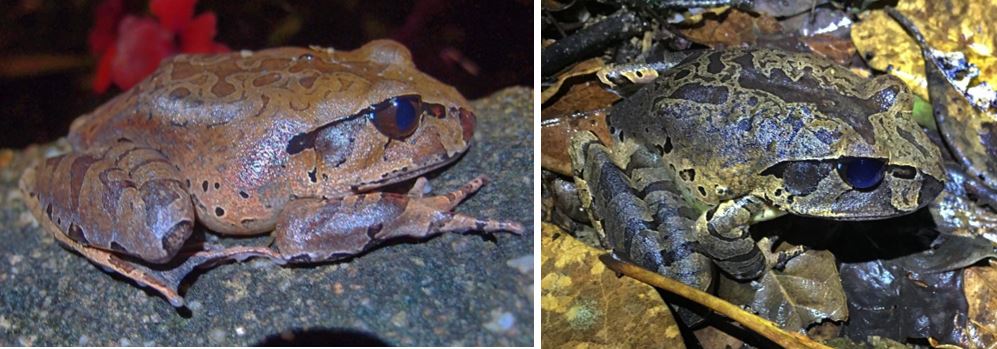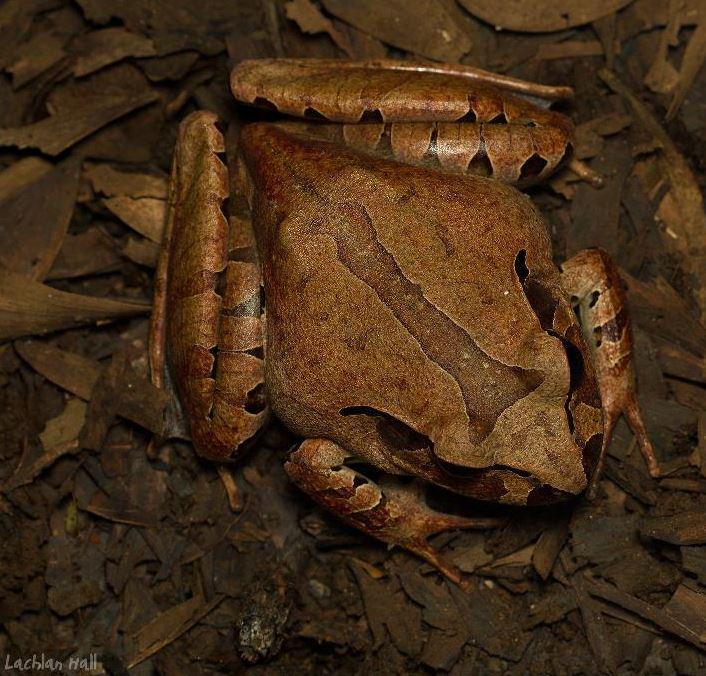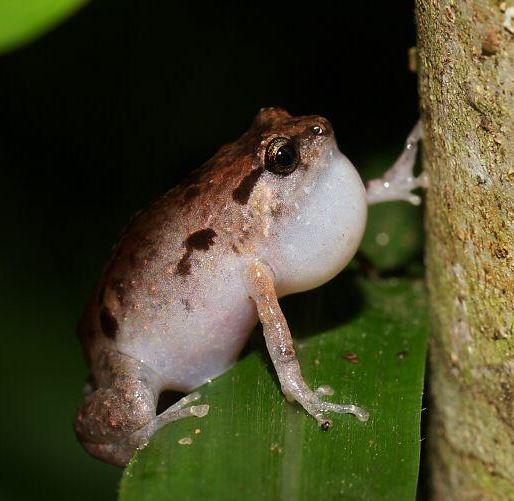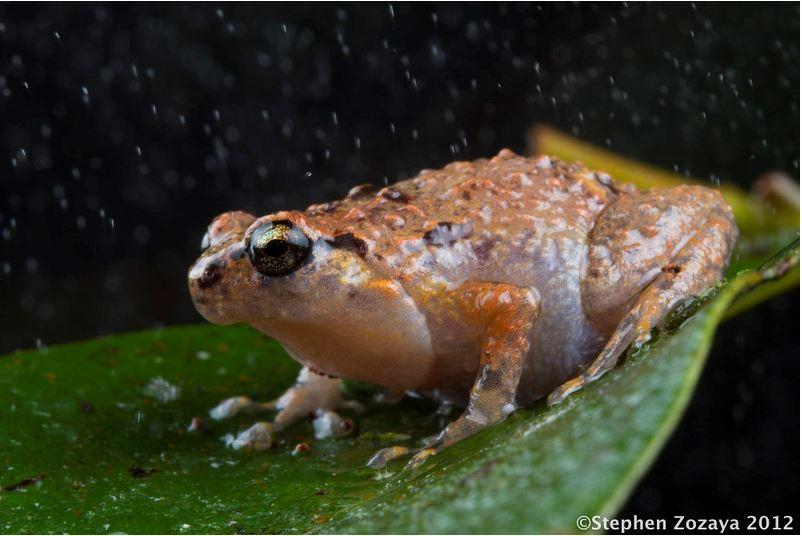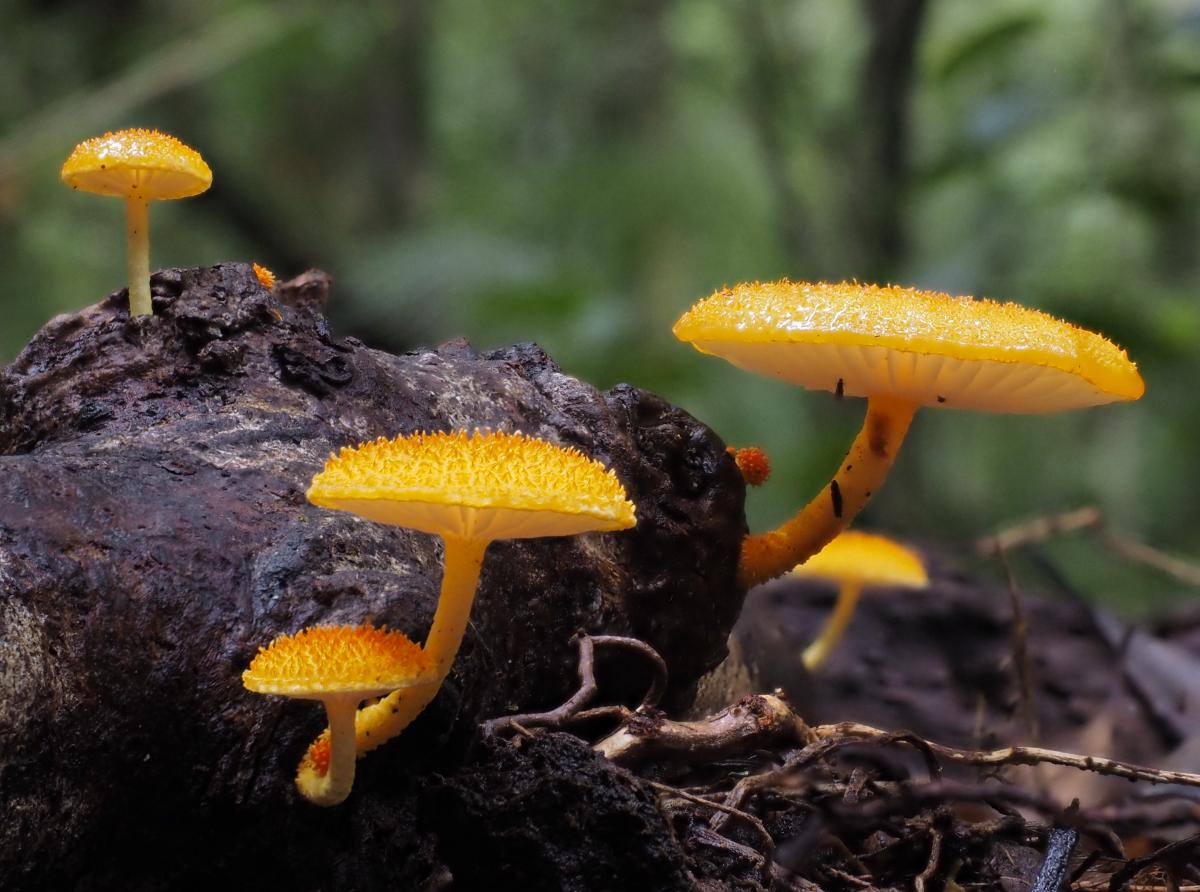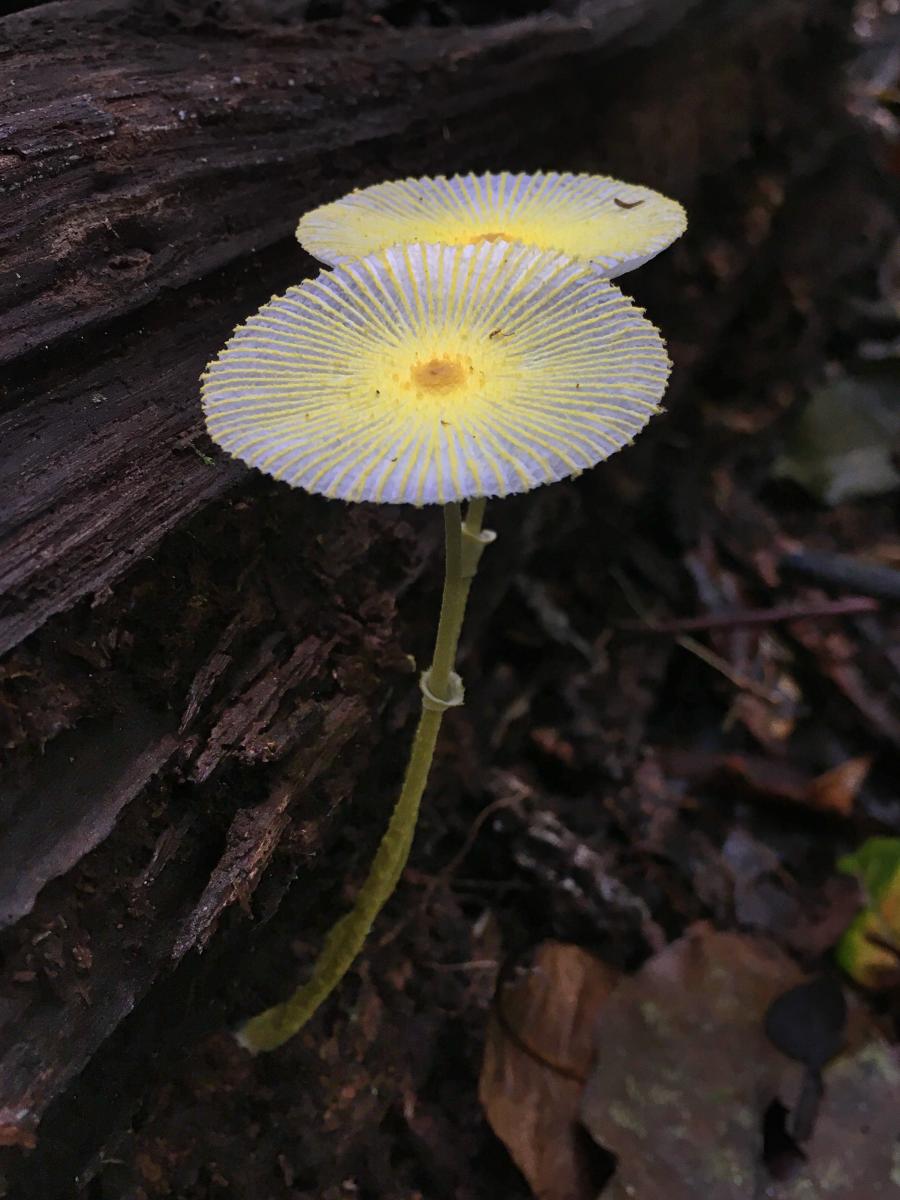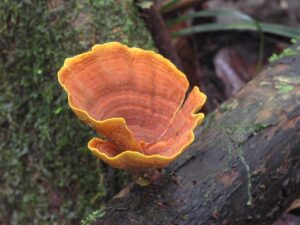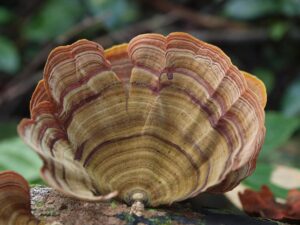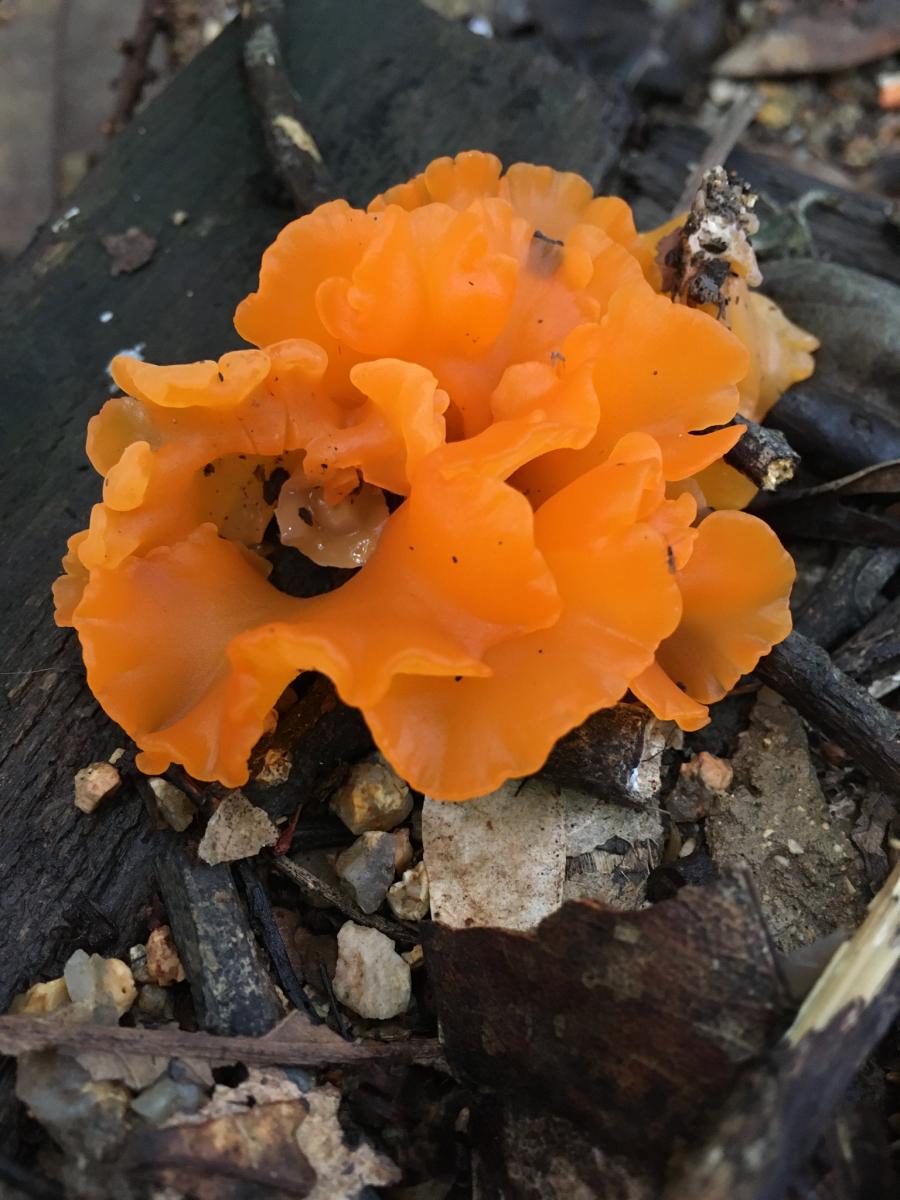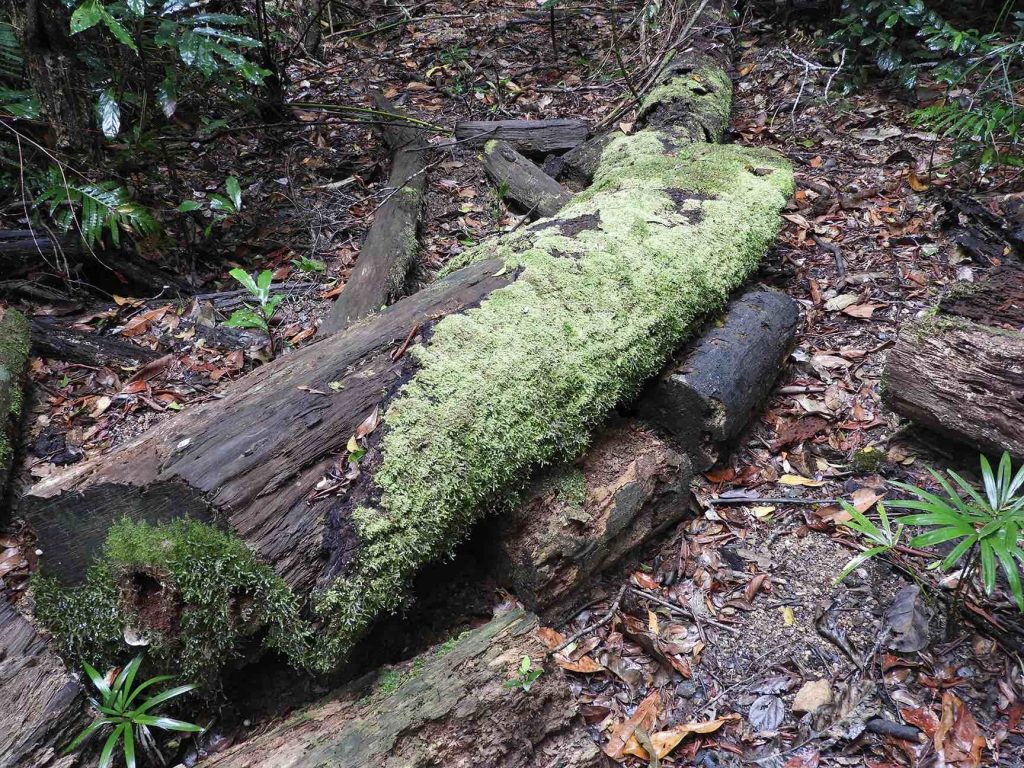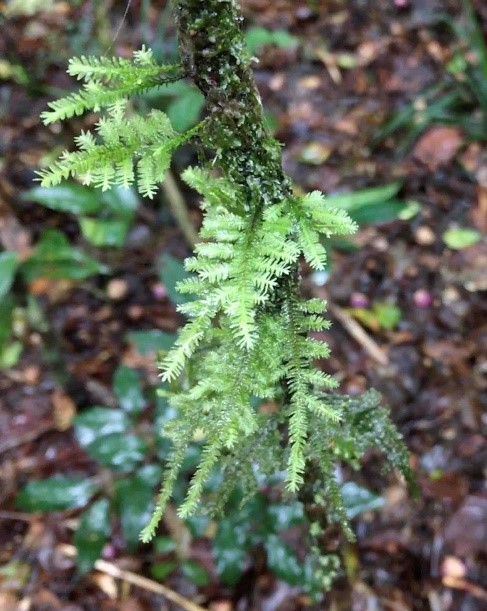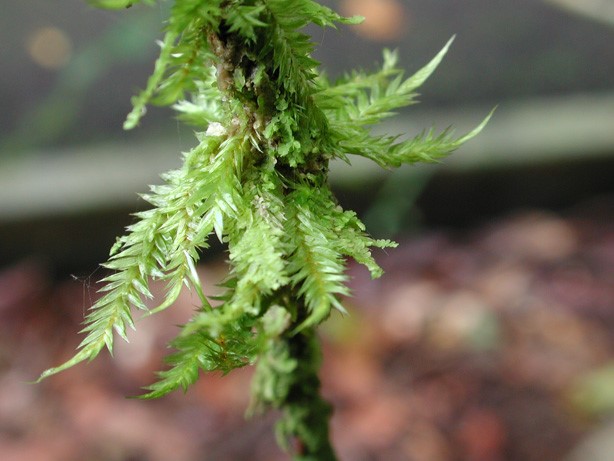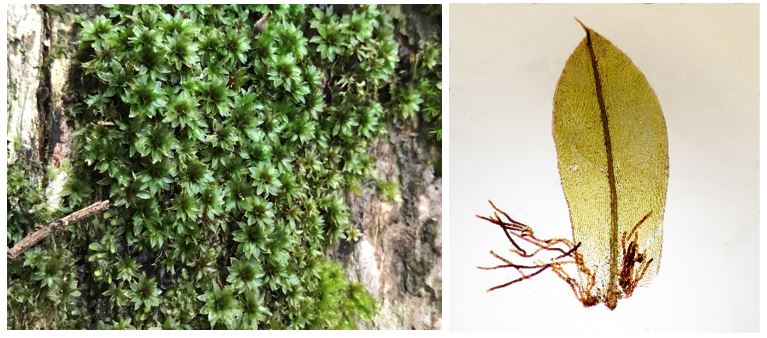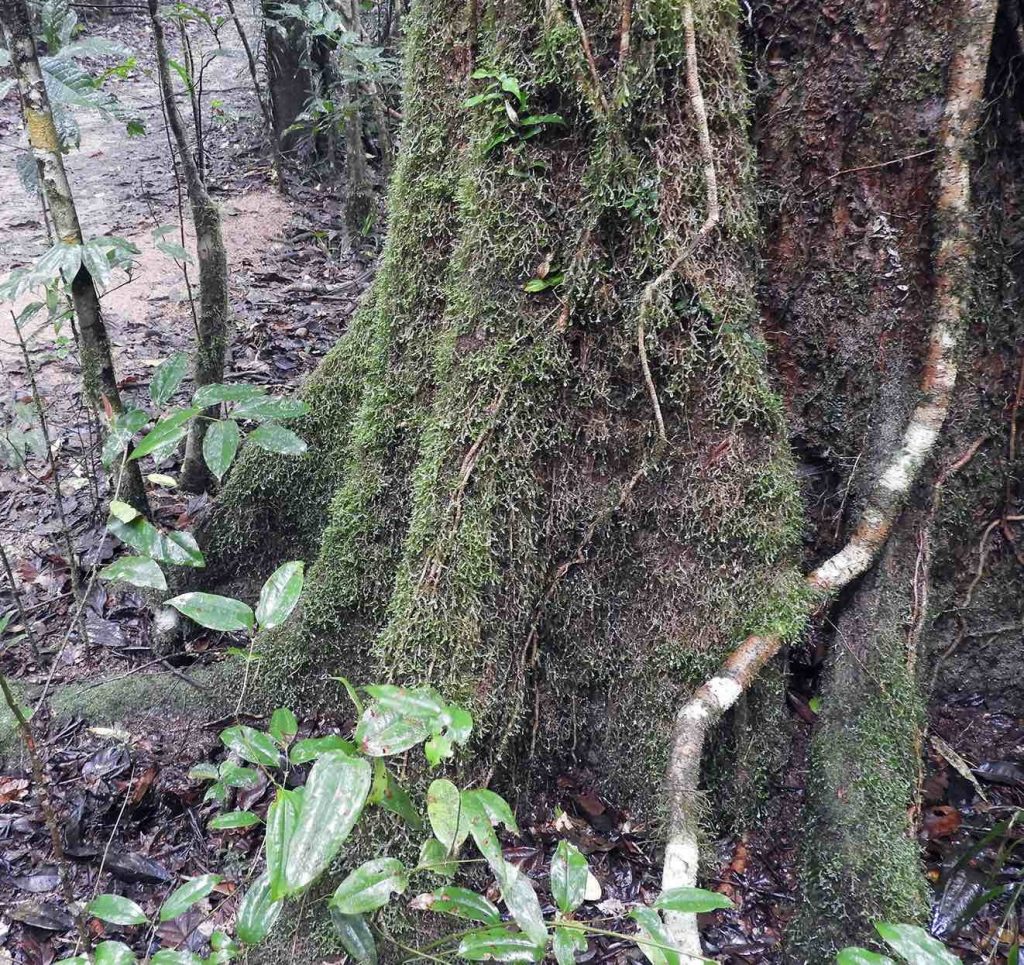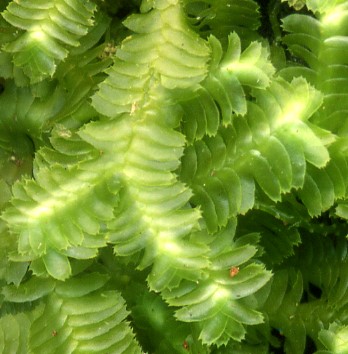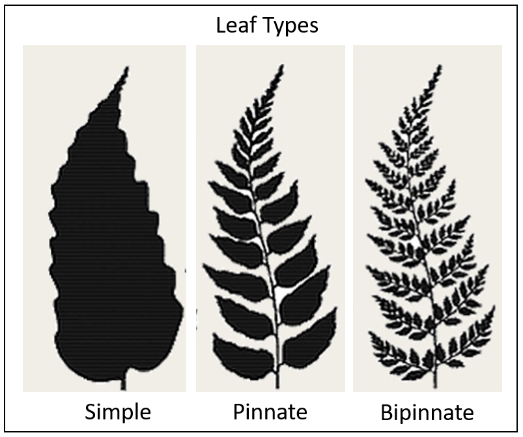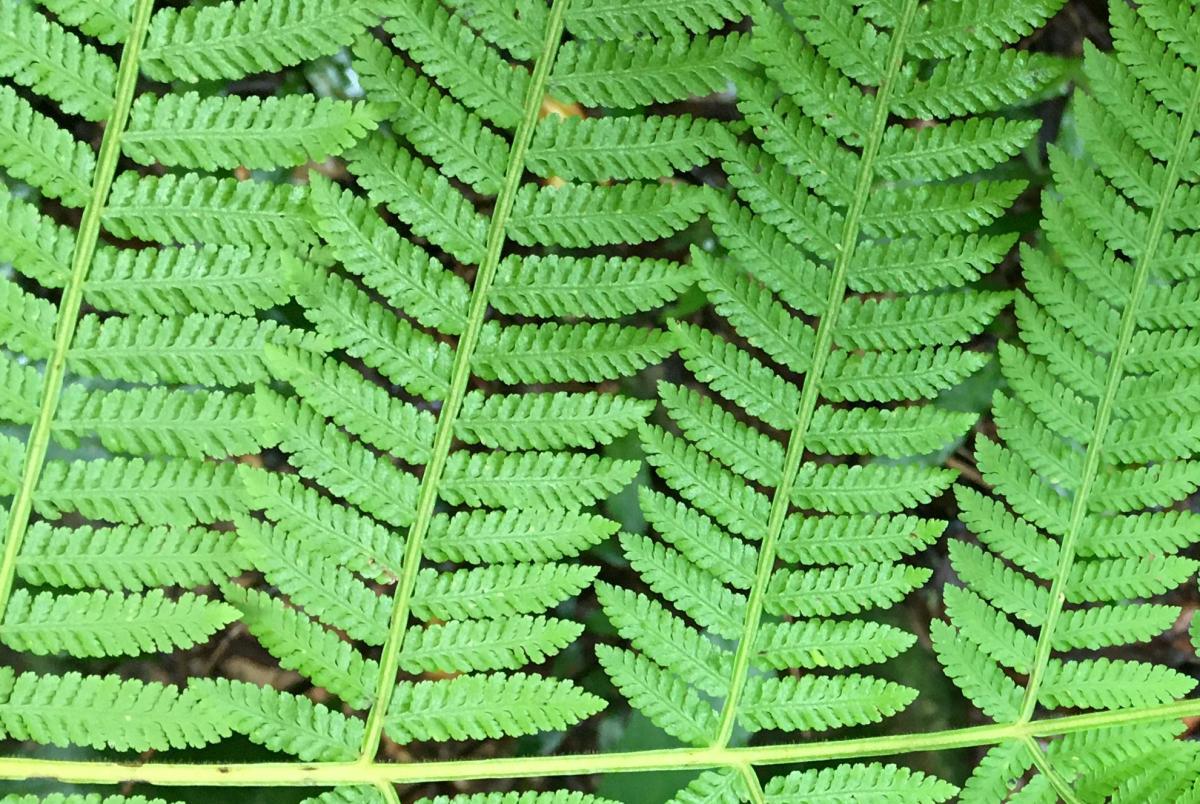by Jamie Oliver
1. Pollia (Pollia macrophylla)
Pollia is a large herb often found in disturbed shady areas along some of the walking tracks around the village. It is sometimes called ‘Wandering Jew’, although it is much larger than the weedy Tradescantia fluminensis of the same common name. Both are in the family Commelinaceae.
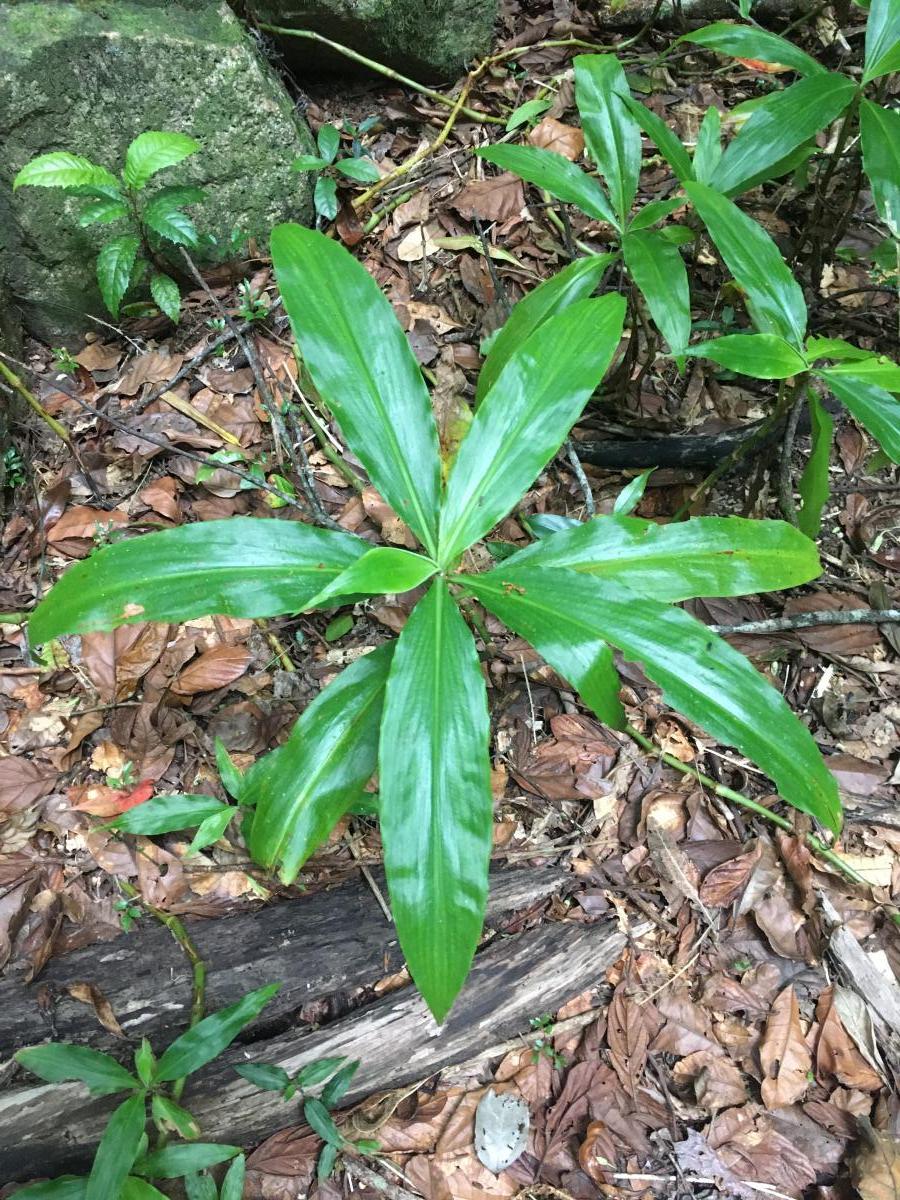
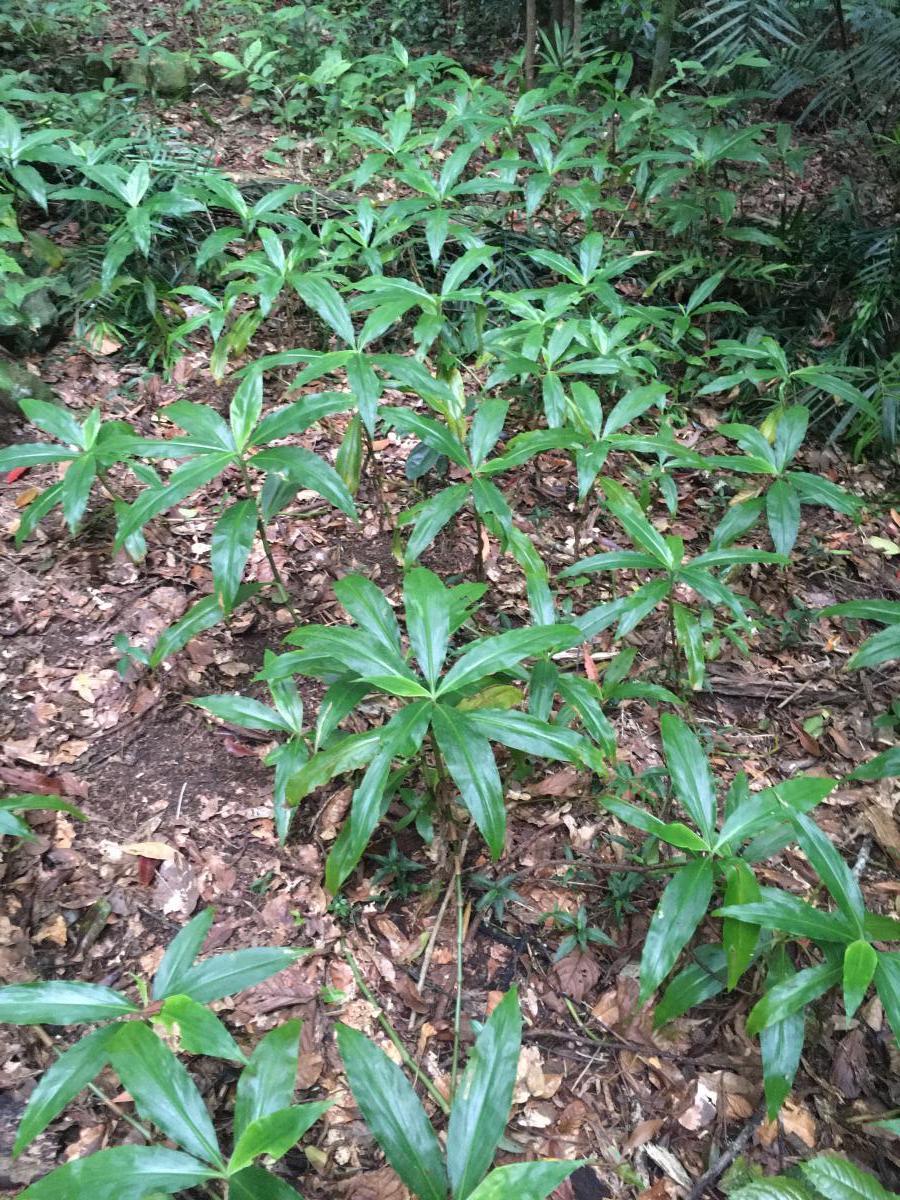

.jpg?bwg=1614920530)
A terrestrial creeping herb, rooting at the nodes1’, the plant somewhat resembles a Cordyline with an erect stem 50 cm to 2m high and narrow elongate leaves. It has attractive small blue/purple flowers borne at the tip of the plant.
Pollia macrophylla is endemic to Queensland.
There is a large and conspicuous patch near the large buttressed quandong (signposted) on the Witts Lookout track. It is just downhill from the quandong, growing along the old path on the other side of the quandong.
2. Pointed Aneilema (Aneilema acuminatum)
Also a member of the Commelinaceae family, this small creeping native groundcover can be found in shady areas beside rainforest tracks. It has elongate pointed leaves and a lovely delicate flower that is sometimes tinged with purple.

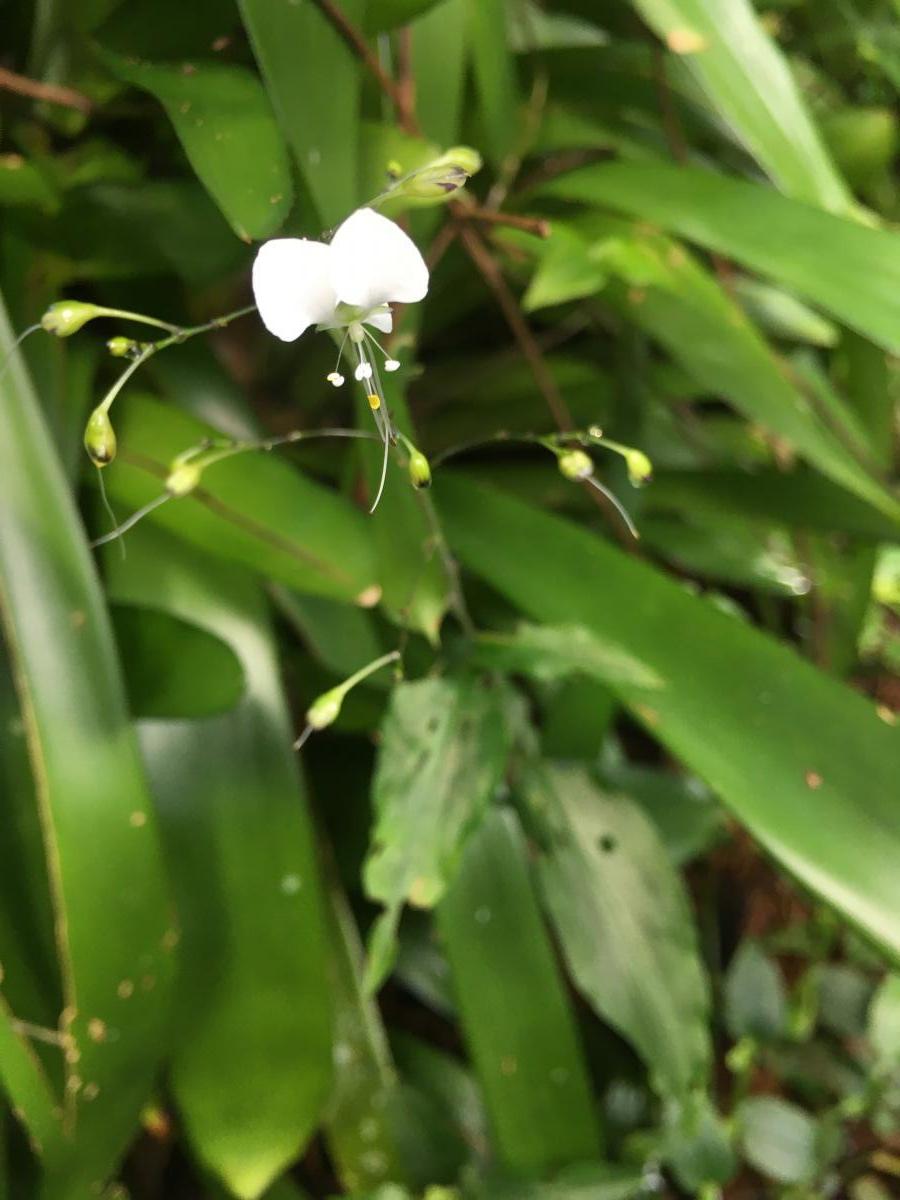
It is often found in Paluma gardens where it struggles to compete with the similar but aggressive introduced Wandering Jew or Trad (Tradescantia fluminensis) which often takes over large shady patches around the village in the wet season. Some Tradescantia species may cause dermatitis or skin rashes in dogs

3. Native Lasiandra (Melastoma malabathricum subsp. malabathricum)
This small shrub is related (and looks very similar) to the showy purple-flowering Tibouchina that is common in gardens throughout the village. Both are in the Melastomataceae family. Melastoma can be found along the main road but also in sunny openings deep in the forest. Its flowers are light mauve/pink in colour and smaller than most Tibouchina flowers. The leaves are covered in fine hairs and have three prominent veins. The plant normally grows to 1-2m.
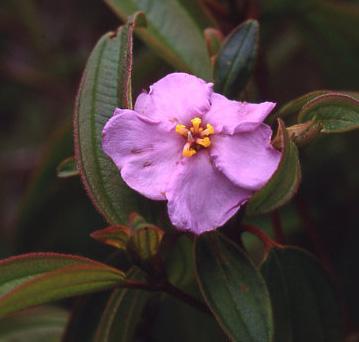
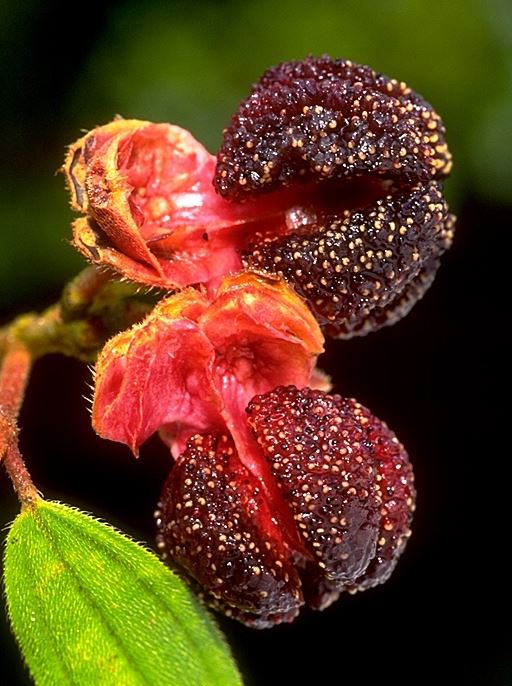
The fruit is red and eaten by double-eyed fig parrots and is apparently edible by humans. Its generic name Melastoma means “black tongue” and one of its other common names is Blue Tongue. Apparently, this is what you can expect if you eat the fruit!
Native Lassiandra can be found across west, northern and eastern Australia in rainforest and other wet areas. It also occurs throughout SE Asia. Some websites and books refer to this species as Melastoma affine, although M. malabathricum subsp. malabathricum is now the accepted name in Australian herbaria.
4. Pleated Ginger (Alpinia arctiflora)
There are several native species of ginger that can be found in disturbed areas of the Wet Tropics. Around Paluma one of the most common is the Pleated Ginger. This species is endemic to northeast Queensland. Gingers have a distinct growth form with the true stem below the soil (rhizome) and a ‘pseudostem’ above, composed of overlapping leaf sheaths. The bright green elongate pointed leaves are distichous – arranged in two alternately vertical rows. The pleated ginger can readily be identified by inspecting and feeling the under-surface of its leaves, which are covered in fine hairs giving it a greyish tinge, and a fine soft felt-like texture. The flowers are small and white and the fruit are elongate and green, turning dark purple when ripe.
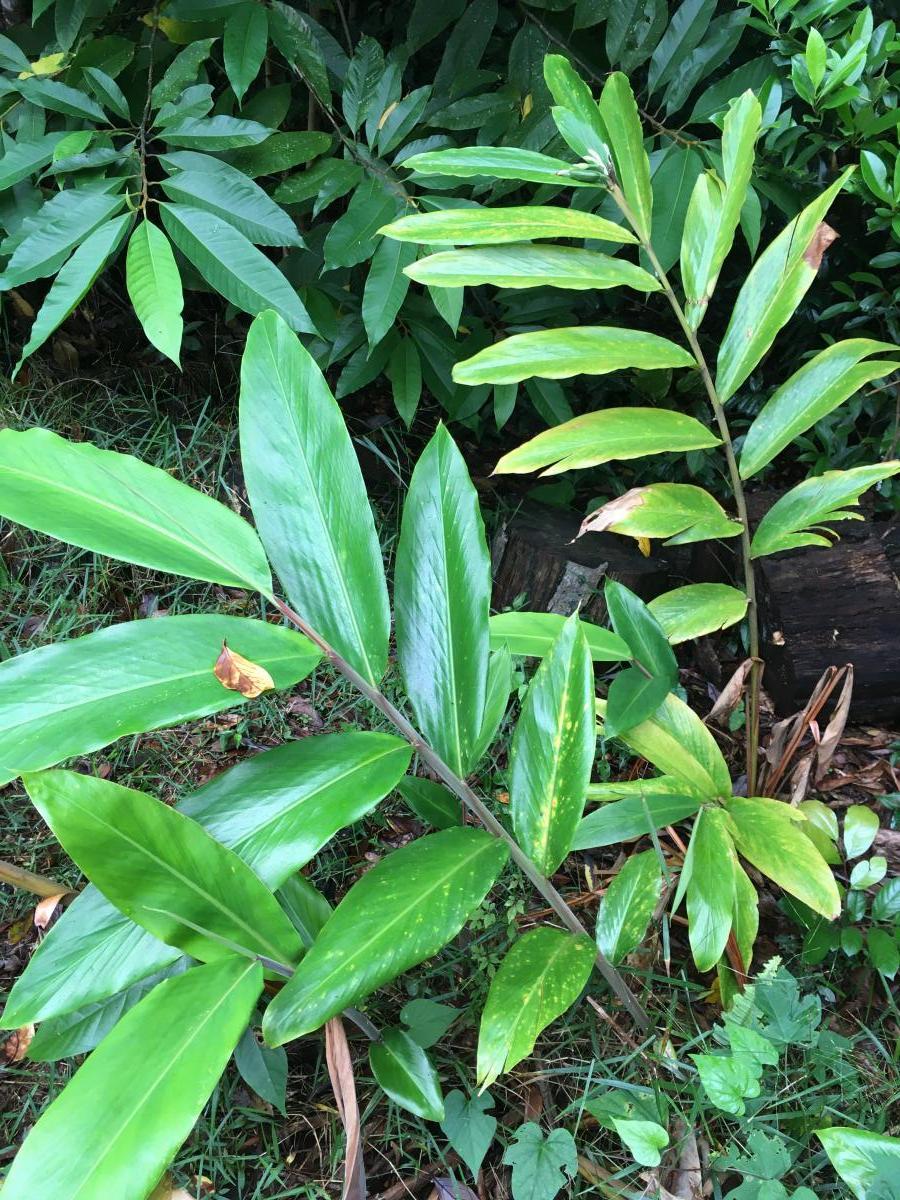
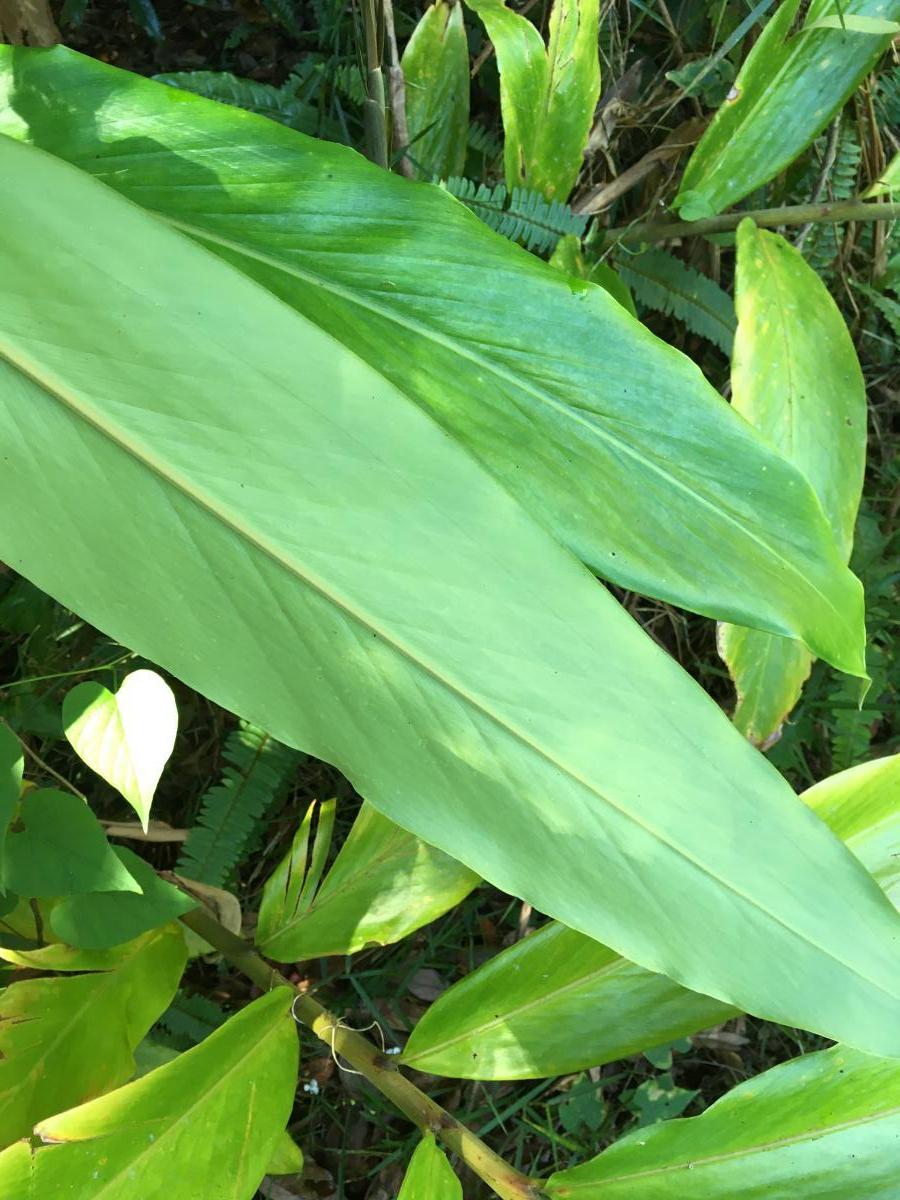
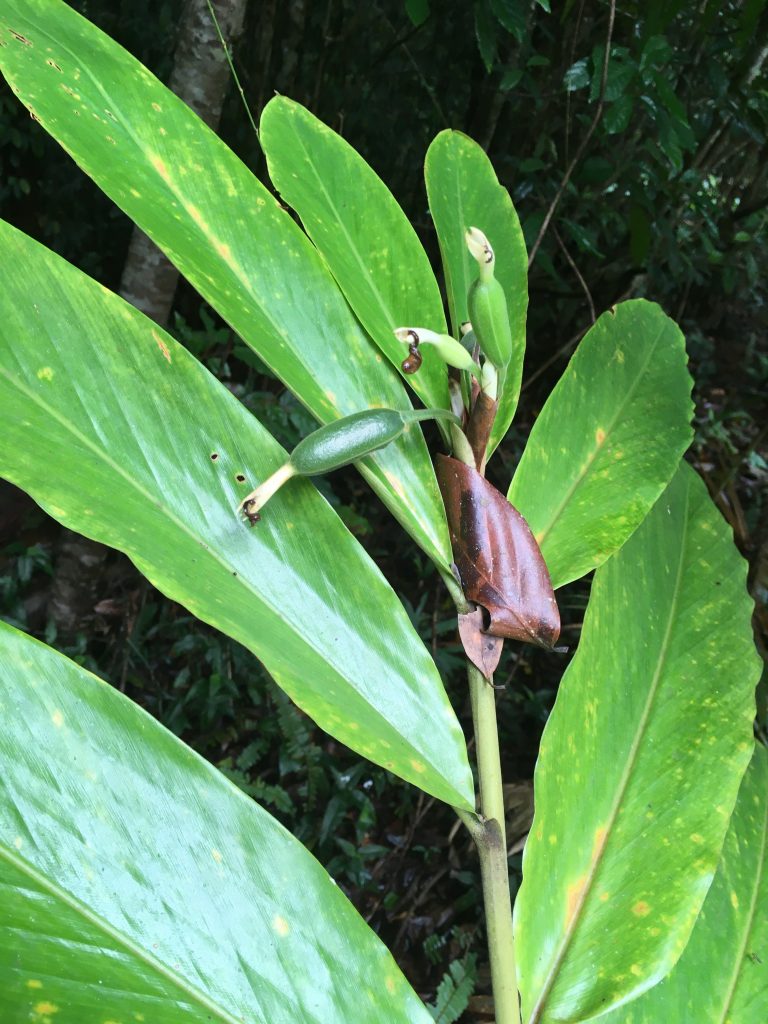
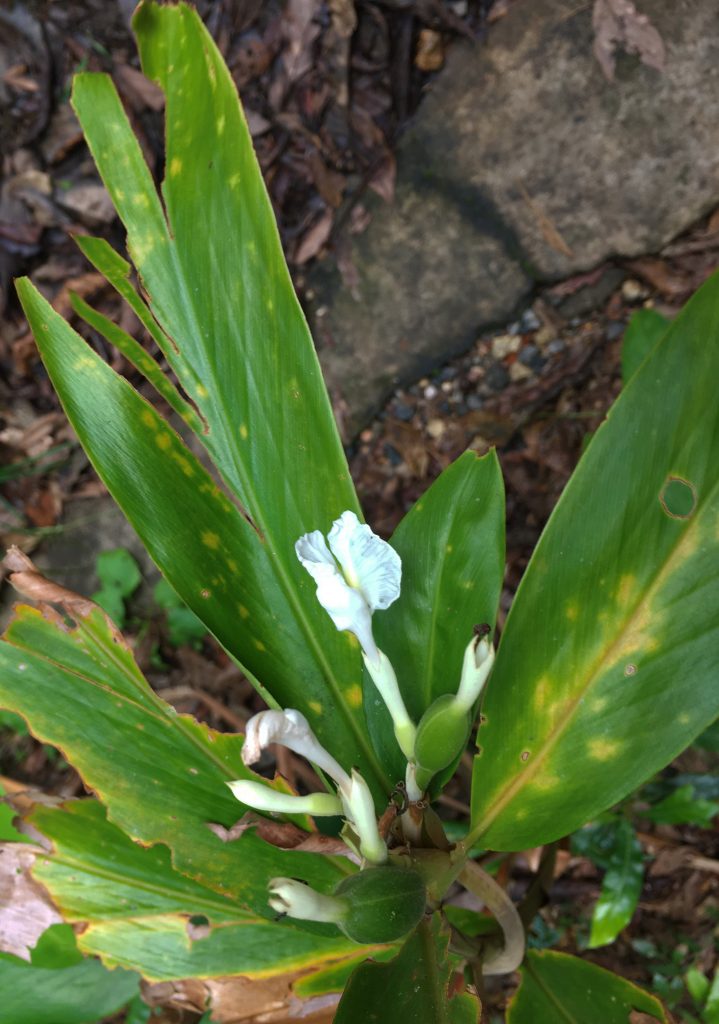
Alpinia arctiflora
The Pleated ginger is one of the larger native gingers (2-3m tall). Another common species (also endemic to Australia) is the native ginger (Alpinia caerulea) which grows to around 1-2m, has smooth green under-surface to the leaves and distinct globular fruit on born on short stalks (1-2cm). The fruit is initially green, turning dark blue as it ripens. The fruit of both species are eaten by Cassowaries.

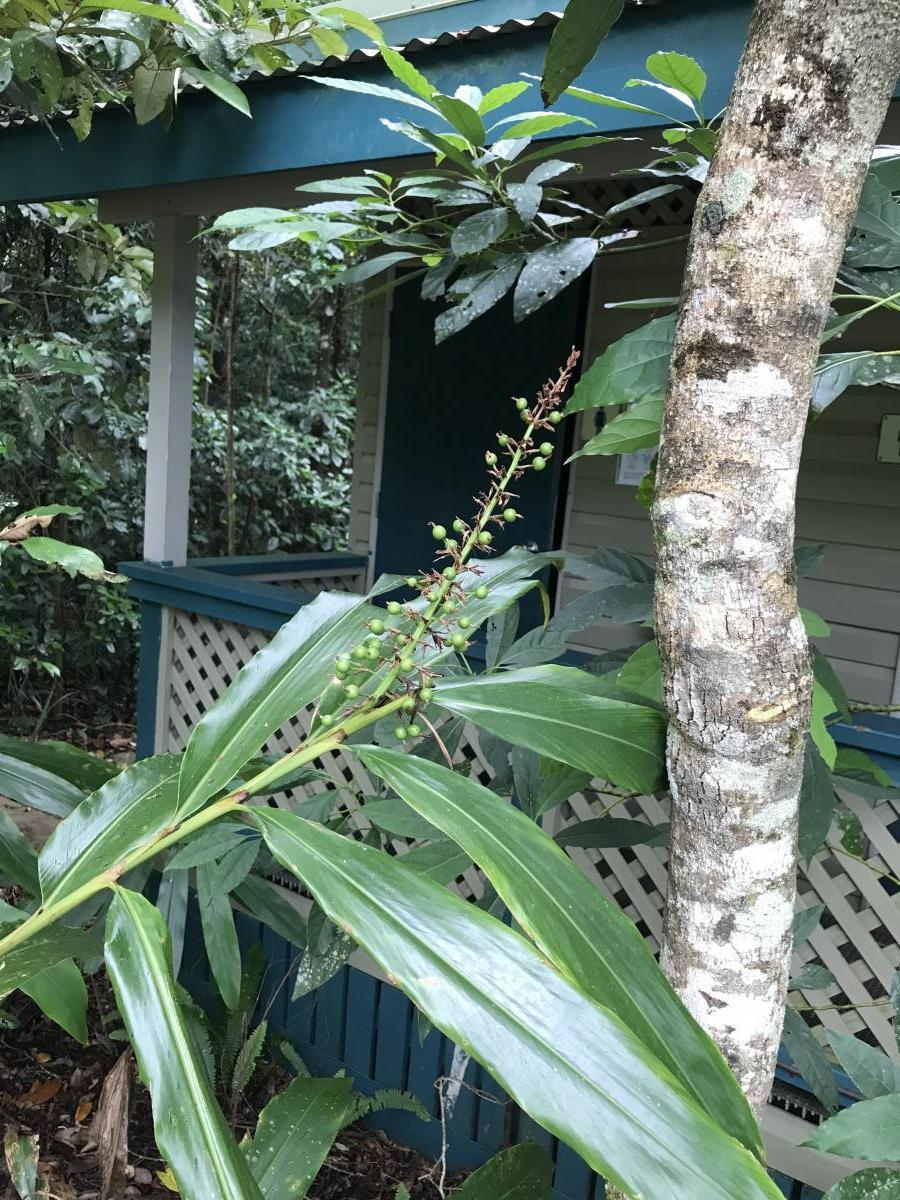
Alpinia caerulea
Don’t be tempted to eat these gingers – ‘edible’ ginger is the rhizome of Zingiber officinale.
5. Gahnia seiberiana (small-seeded saw-sedge)
Sedges are related to grasses, but they mostly have solid triangular stems, while grasses have hollow stems except at the nodes. The small-seeded saw-sedge is a very common sight in well-lit areas along the village walking tracks. It has a solid round stem and whorls of robust green leaves and often a skirt of dead leaves at ground level concealing a prostrate stem. In open sunny areas it can form large multi-stemmed tussocks. The leaf margins are serrated and can easily cause a painful cut if dragged across the skin. Under a mostly closed canopy these sedges rarely flower but along the roads or in clearings the flower spikes/seed heads can be seen, rising above the leaves with small (3mm x 1.5mm) reddish brown seeds.
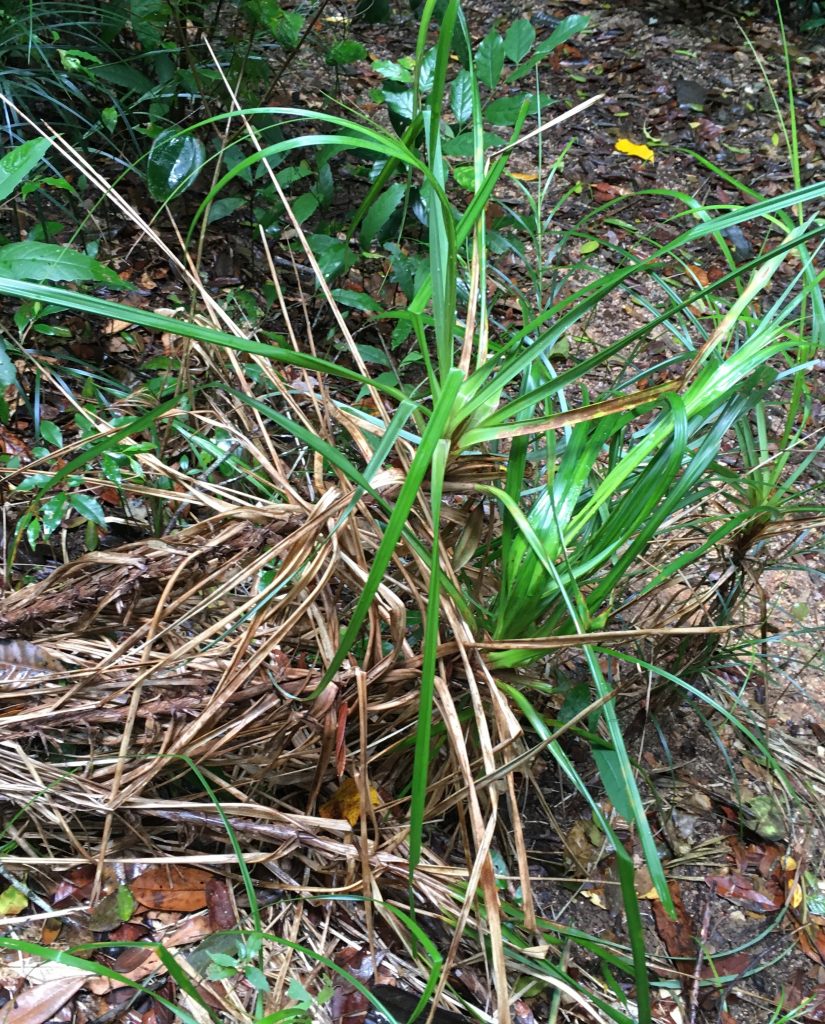
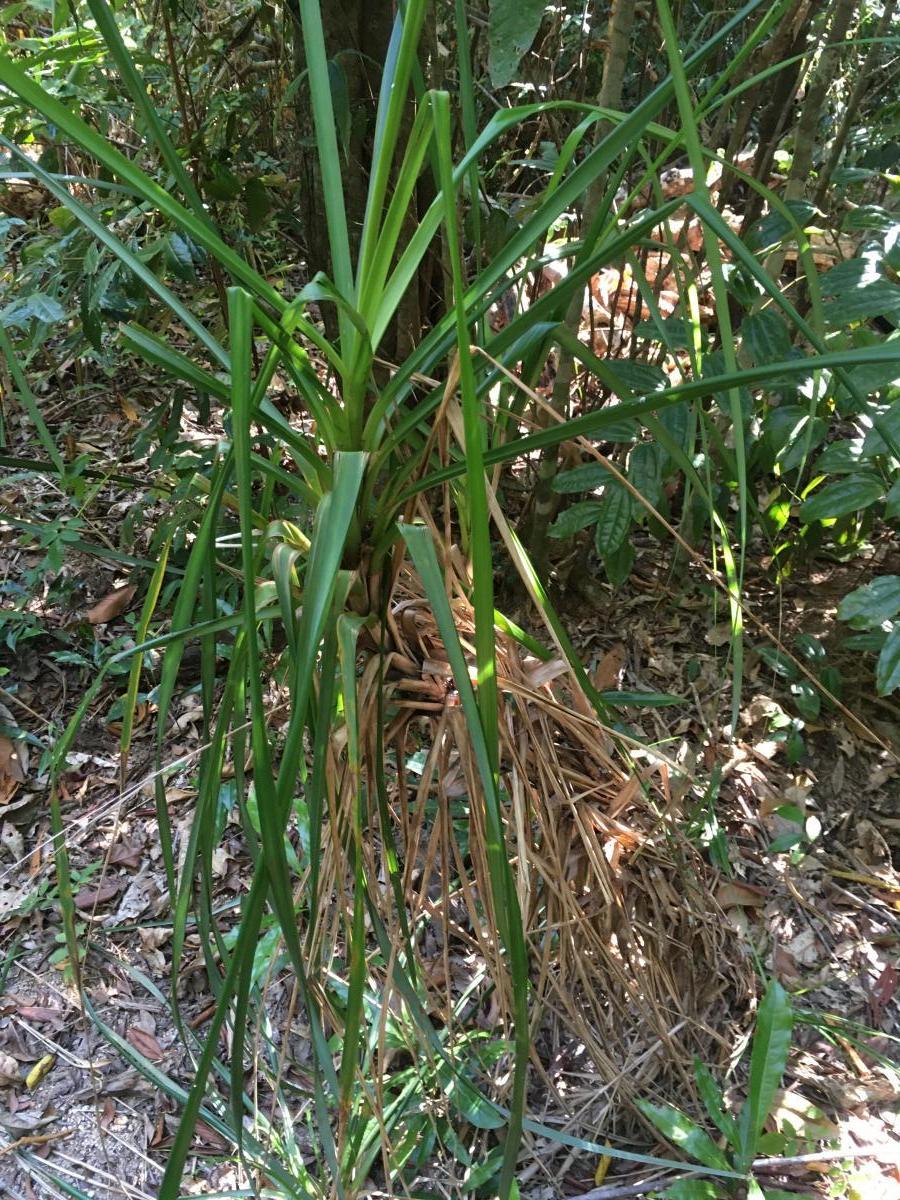
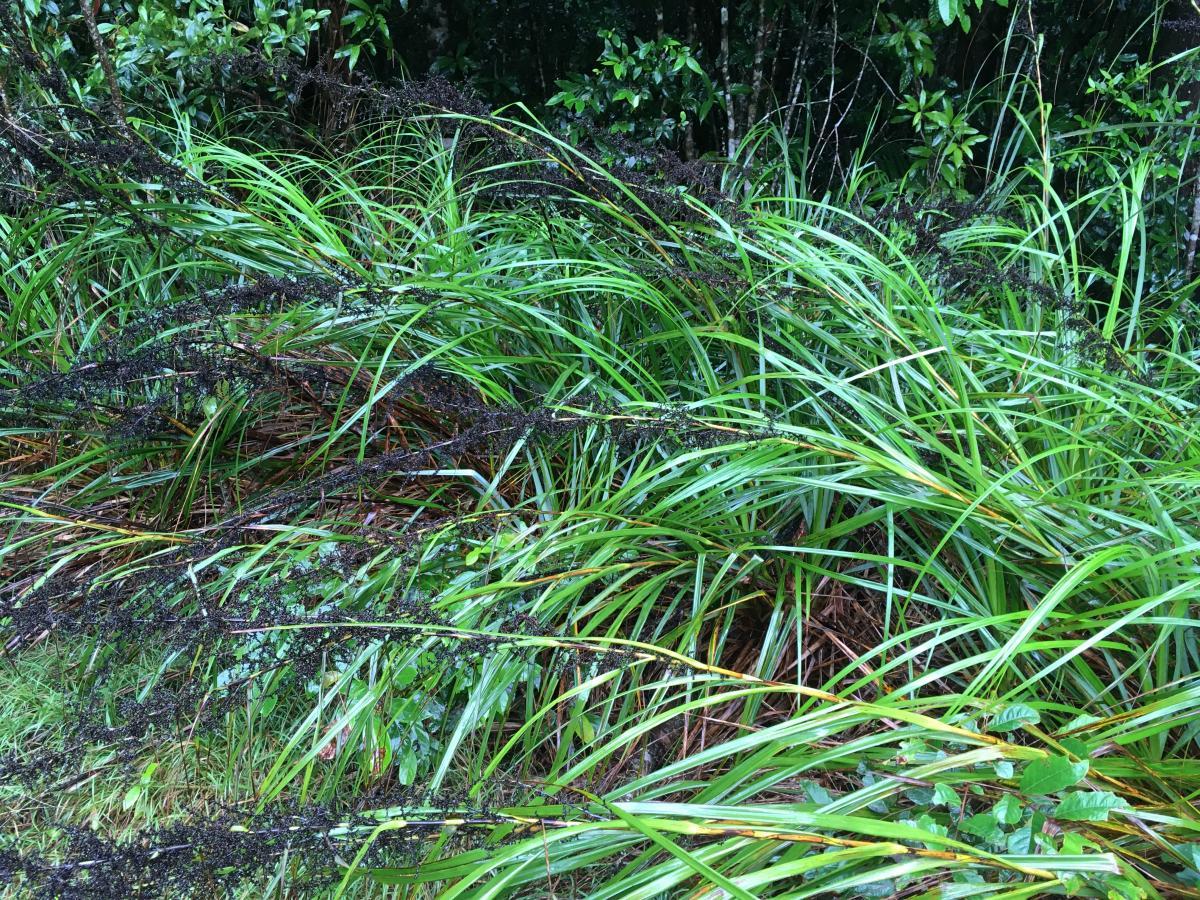
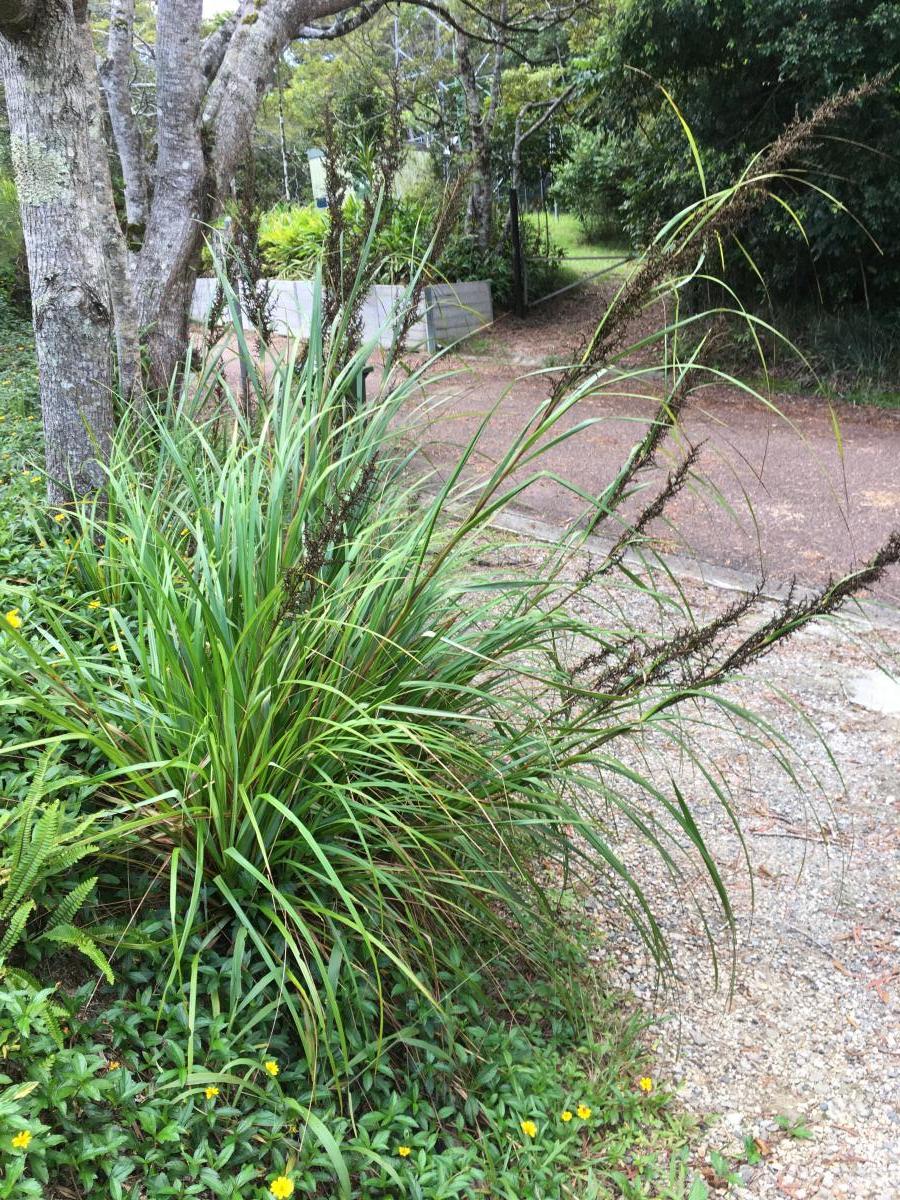

Gahnia seiberiana
Another round-stemmed sedge with serrated margins that is more common beside the main road through the village is the red-fruited saw-sedge (Gahnia aspera). The leaves are similar, but they tend to be spaced wider along the erect stem, and the flower spike emerges midway up the stem and has much larger bright red seeds.
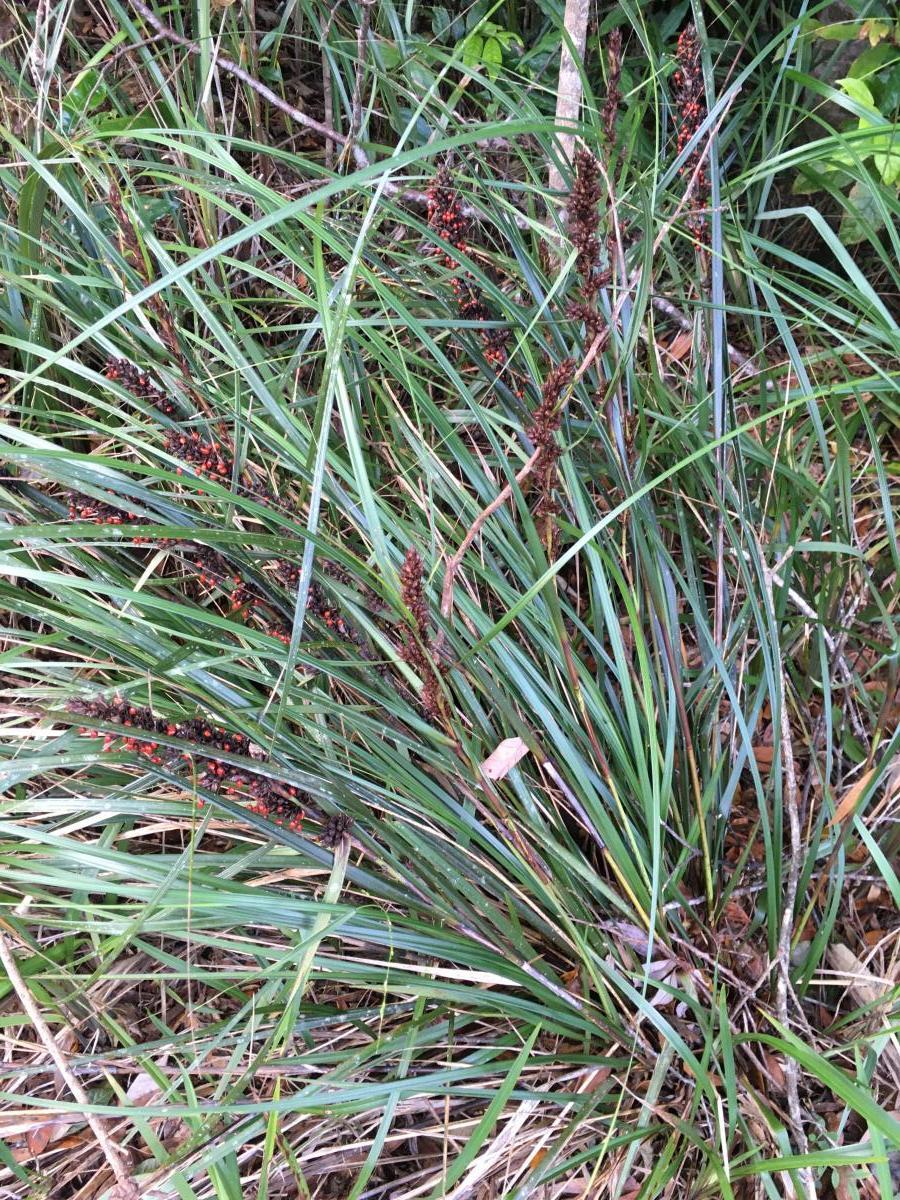
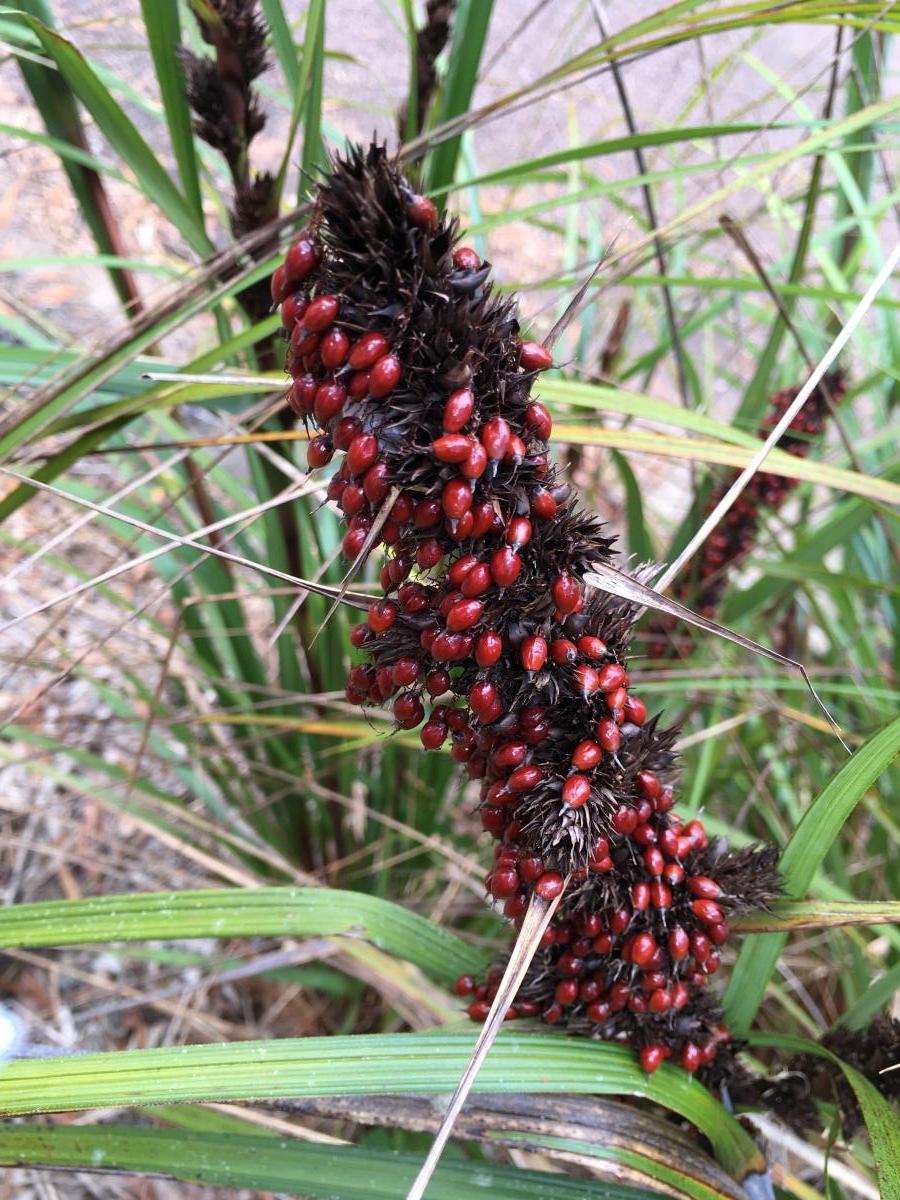
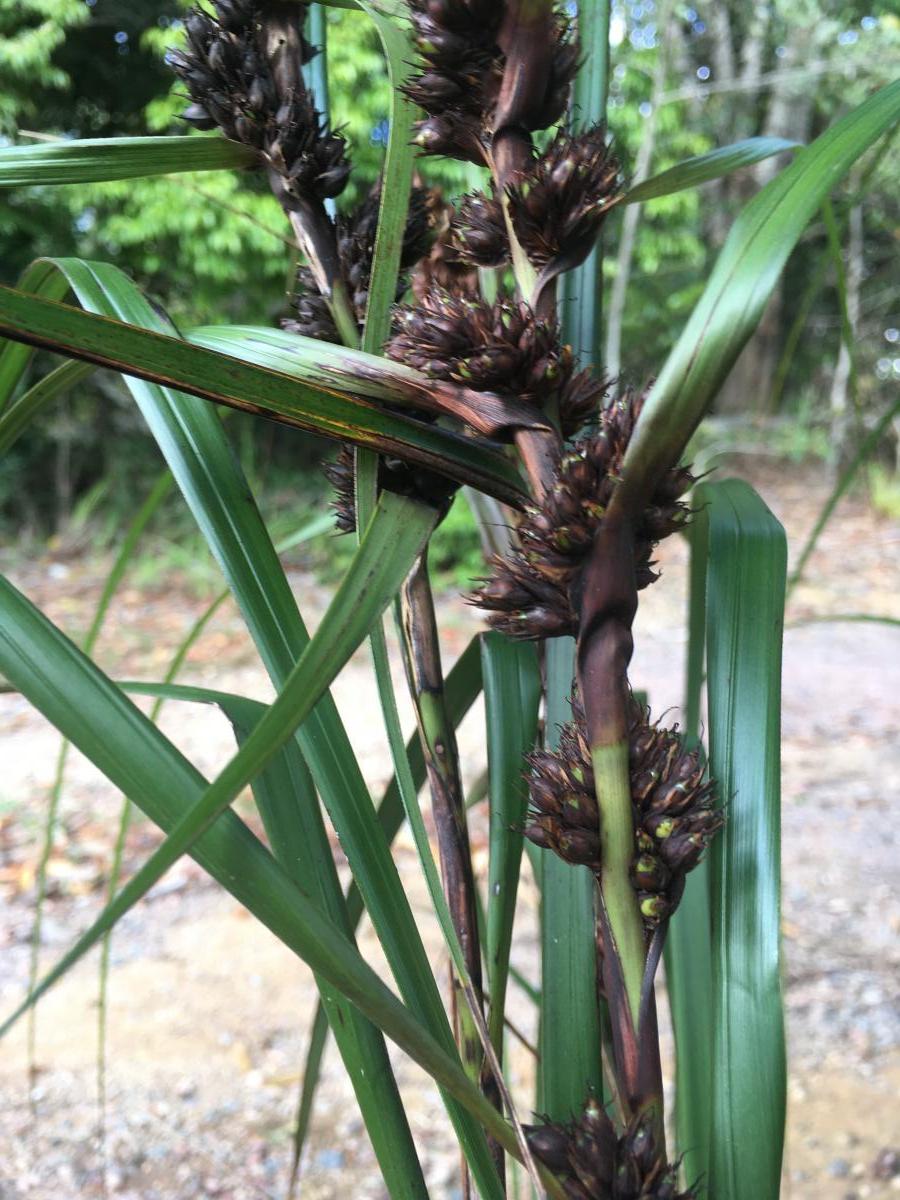
Gahnia aspera
A further kind of sedge, that is much finer and looks more like long fine grass growing on the sides of walking tracks is Cyperus sp. There are several species and they are not easy to tell apart but the group is easy to identify from its grass-like growth form and its distinctive sharp triangular stem.
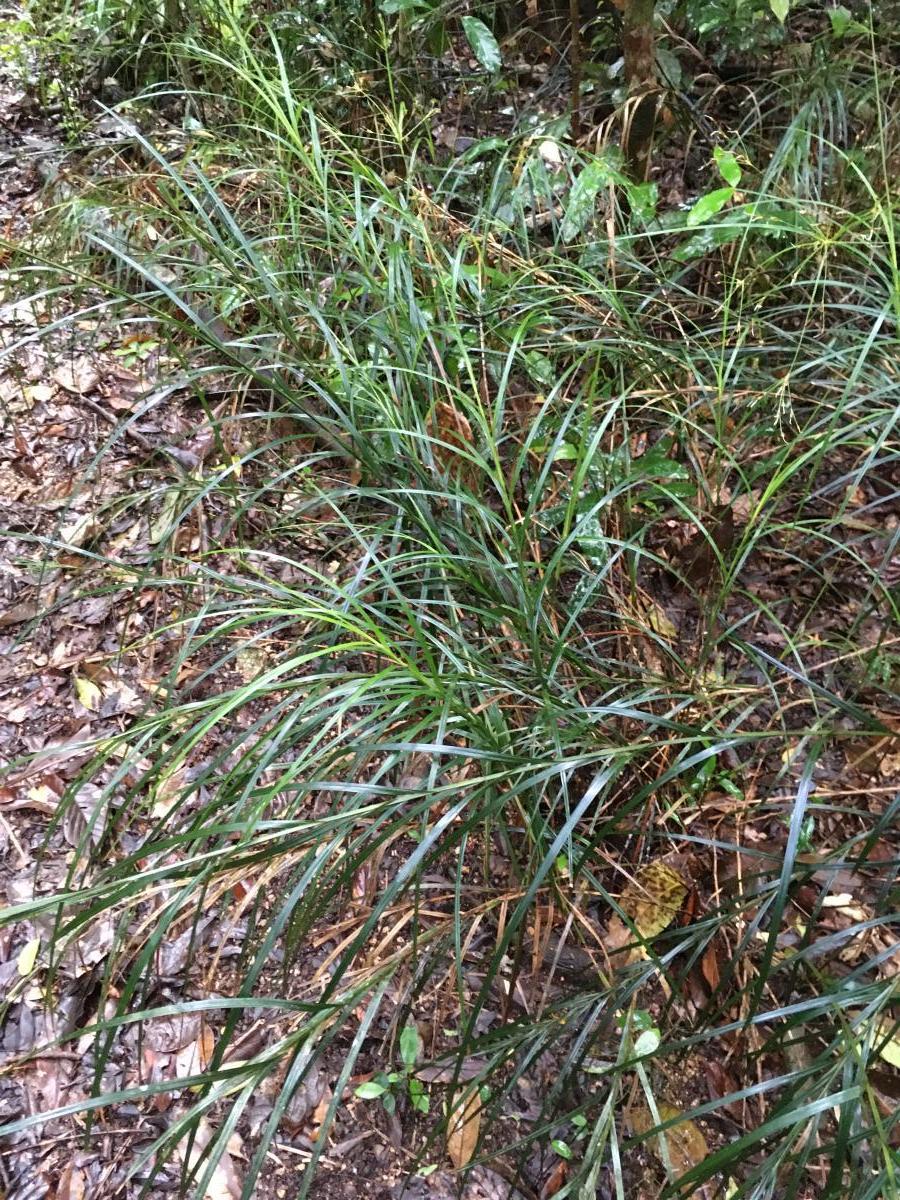

Cyperus sp

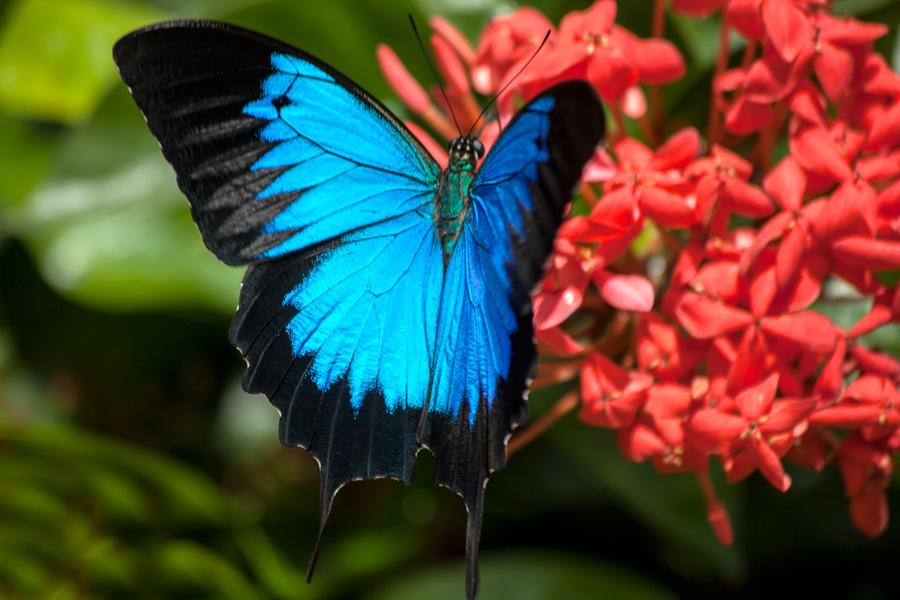
_(9874865575).jpg?bwg=1616307457)
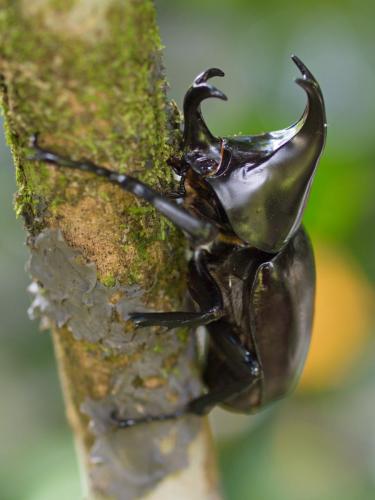

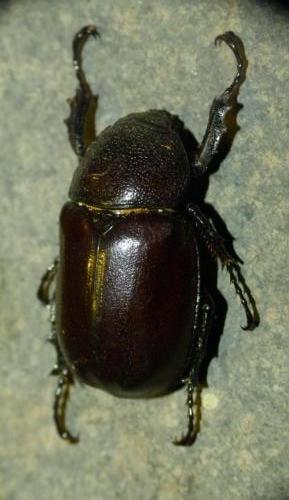
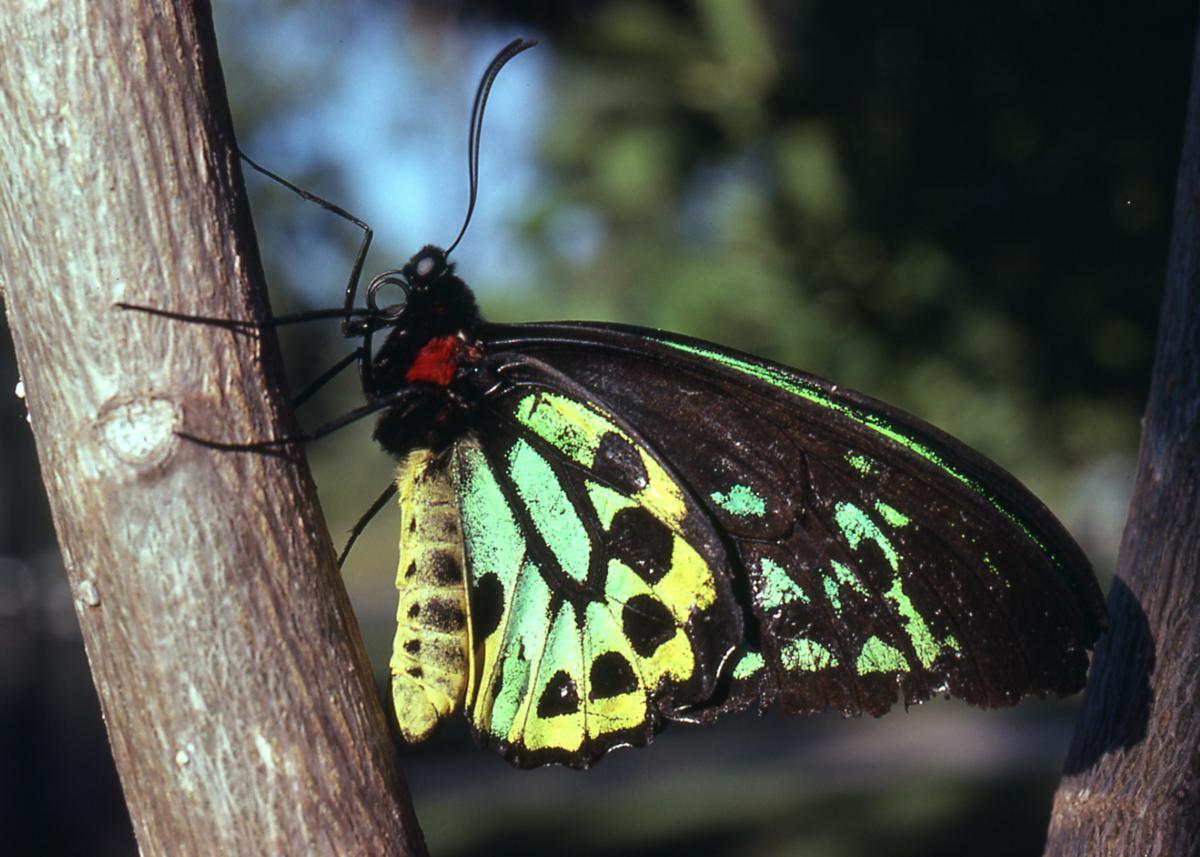
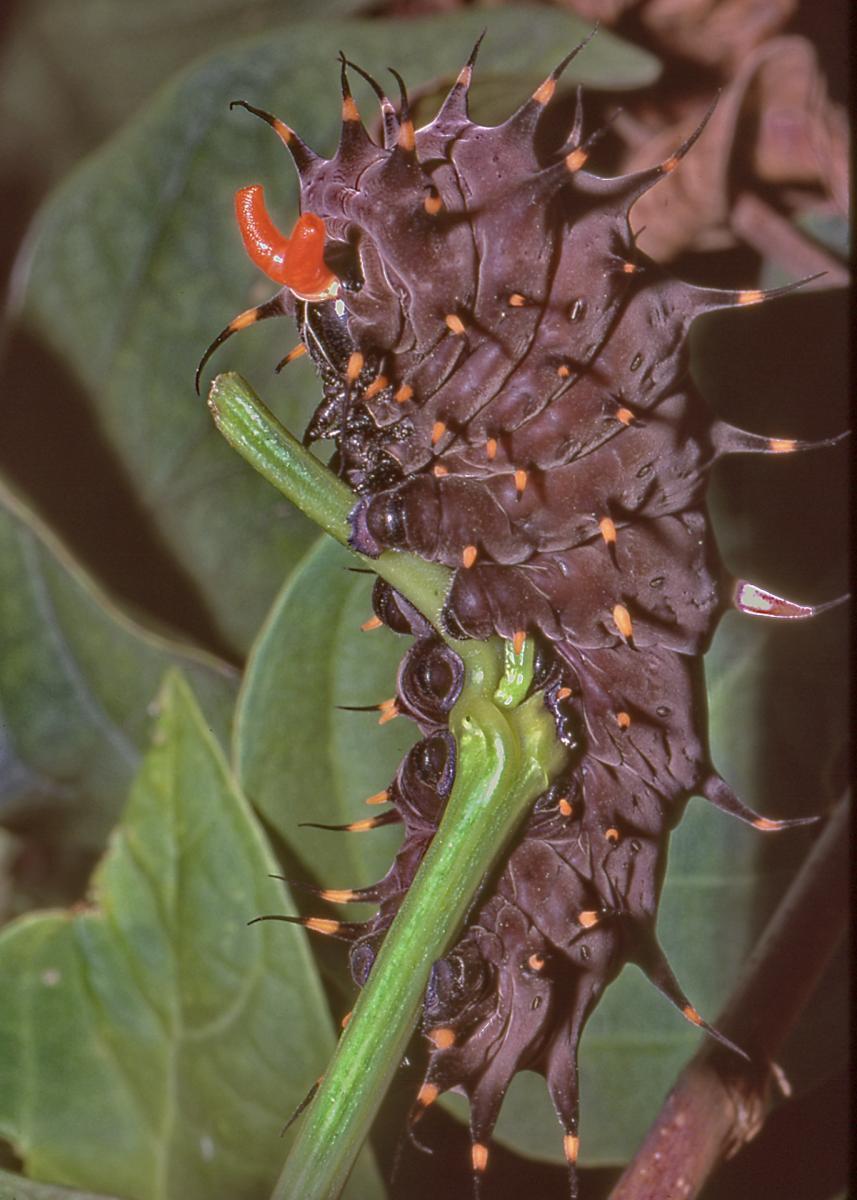
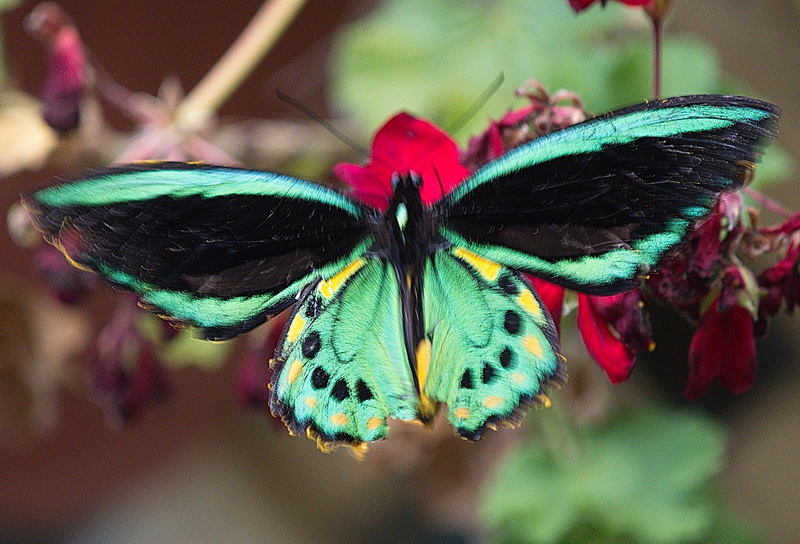



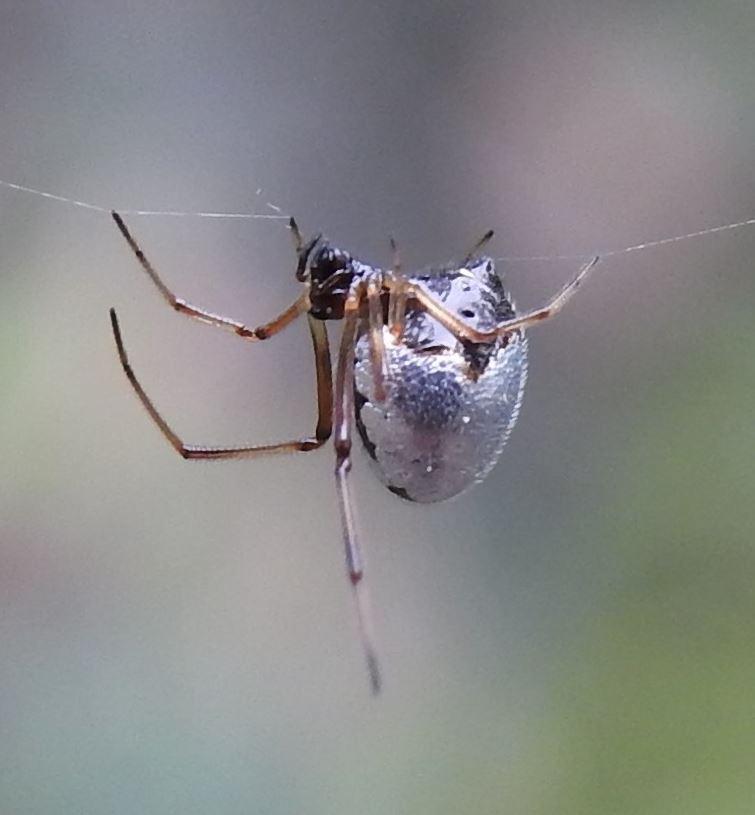


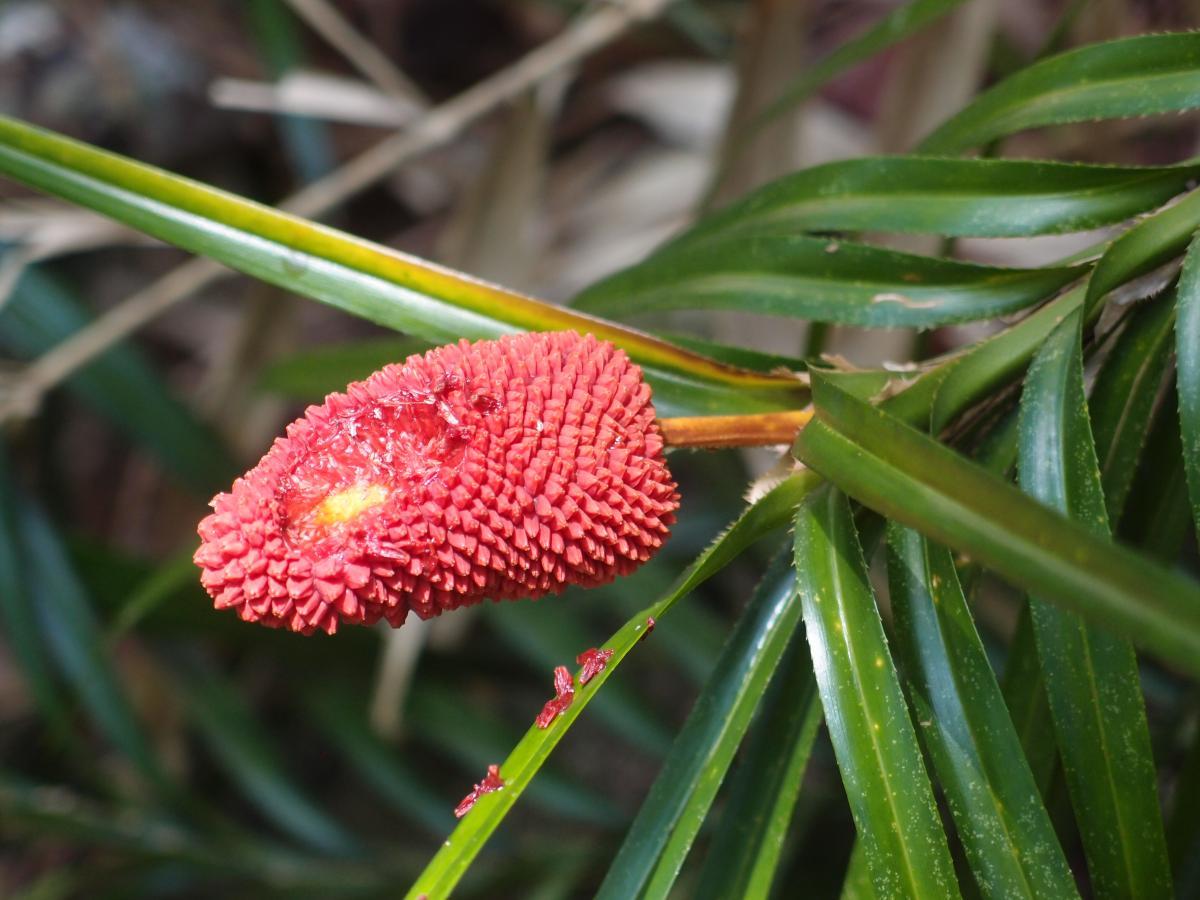
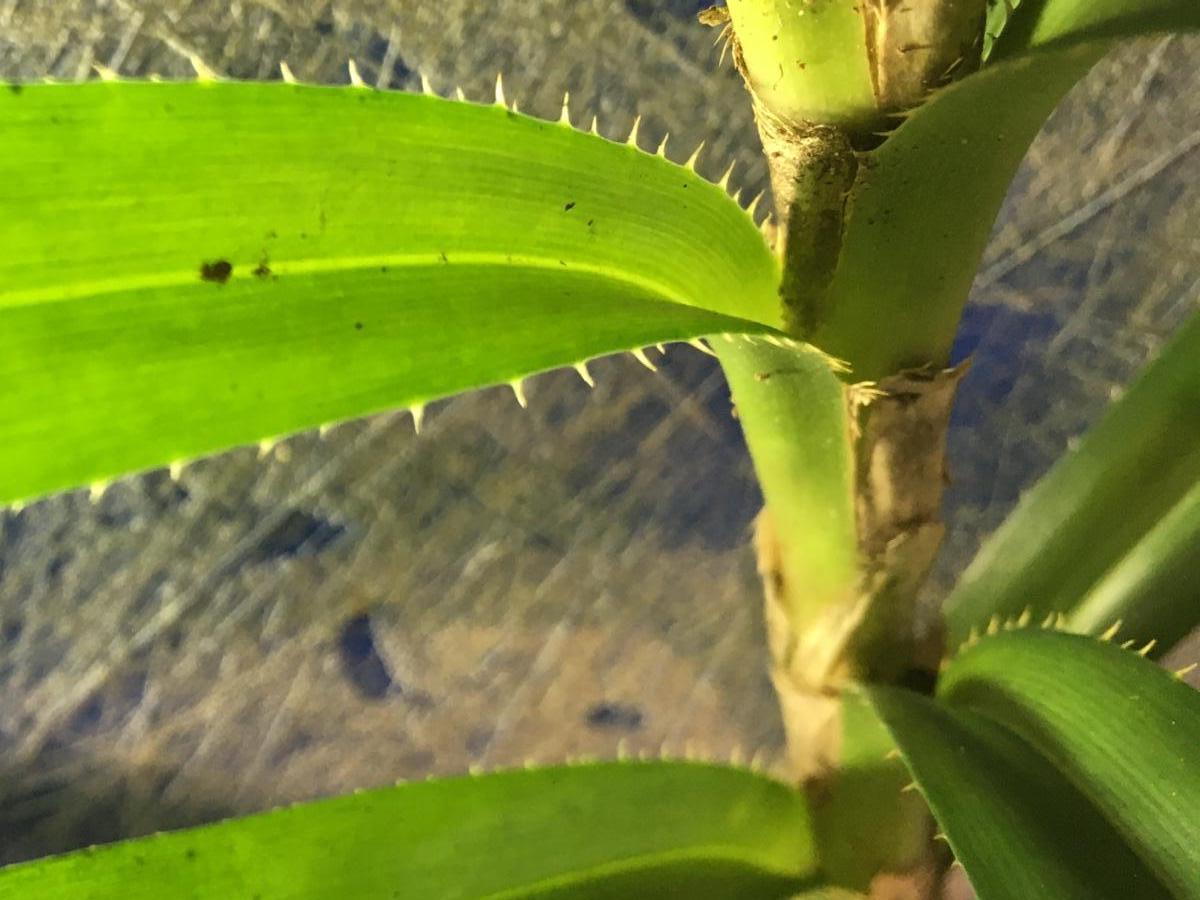
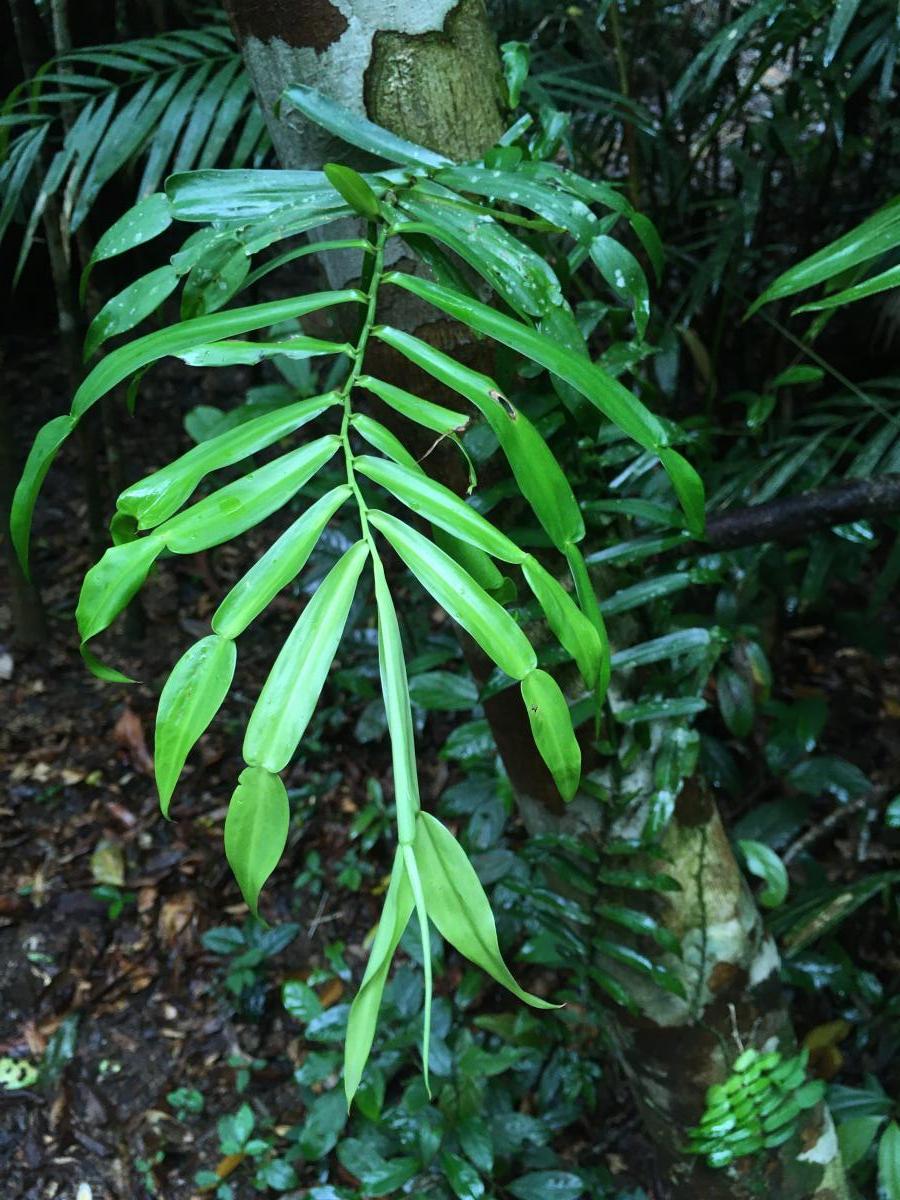
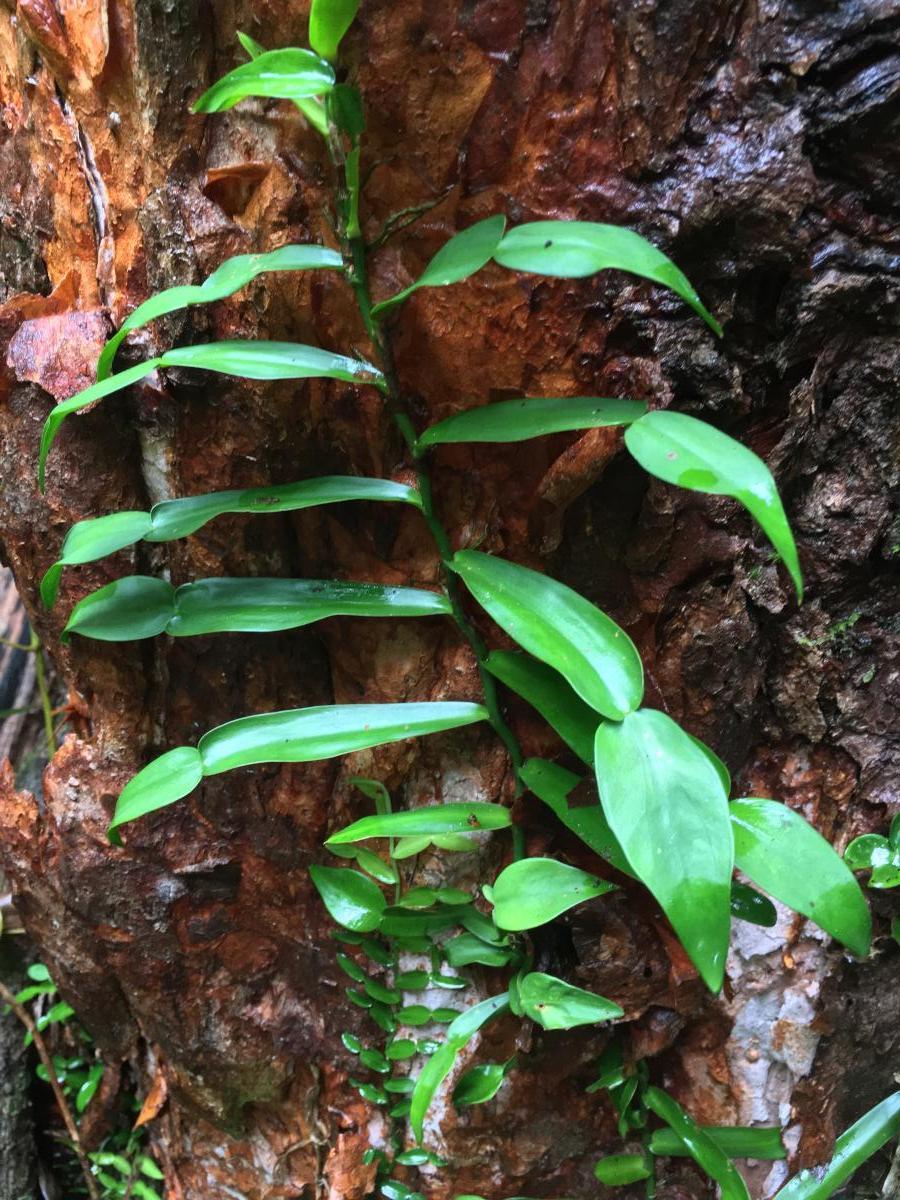
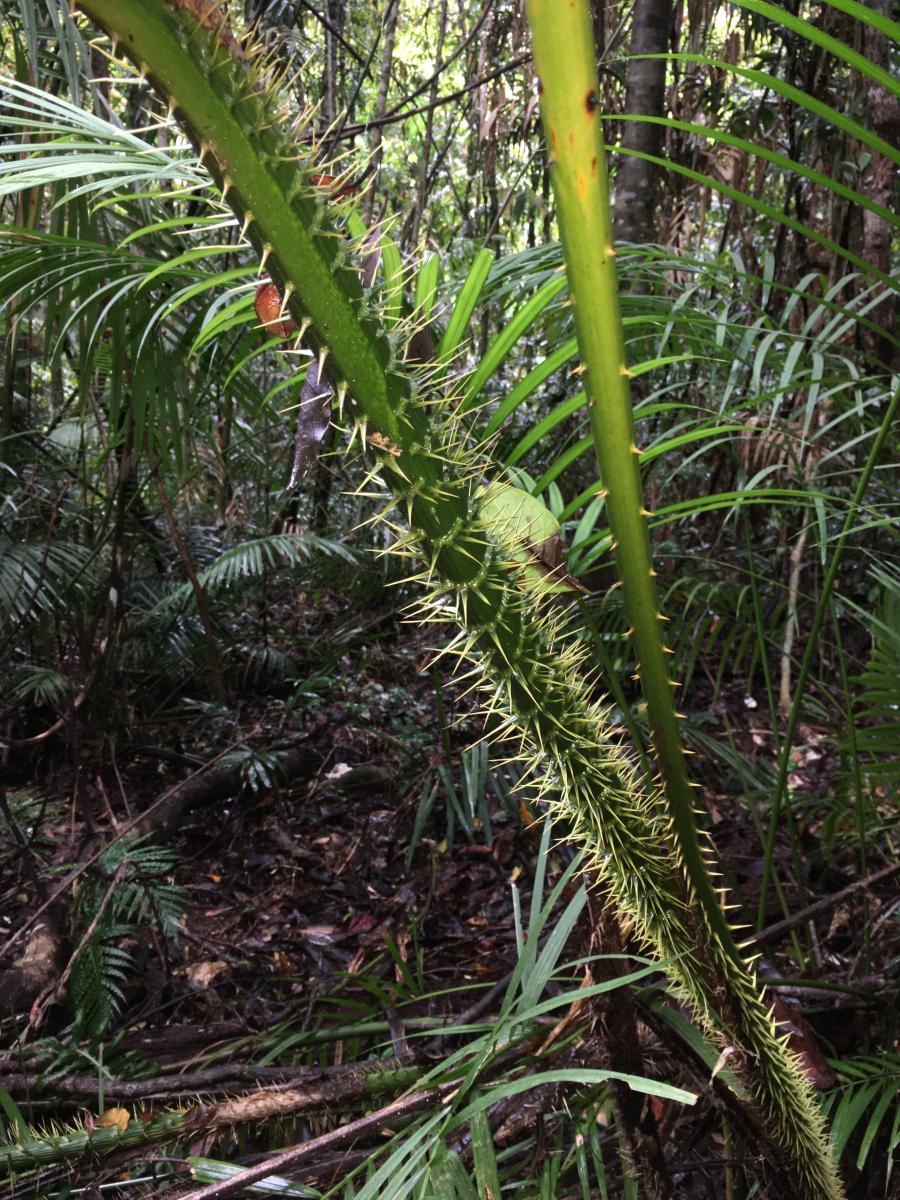
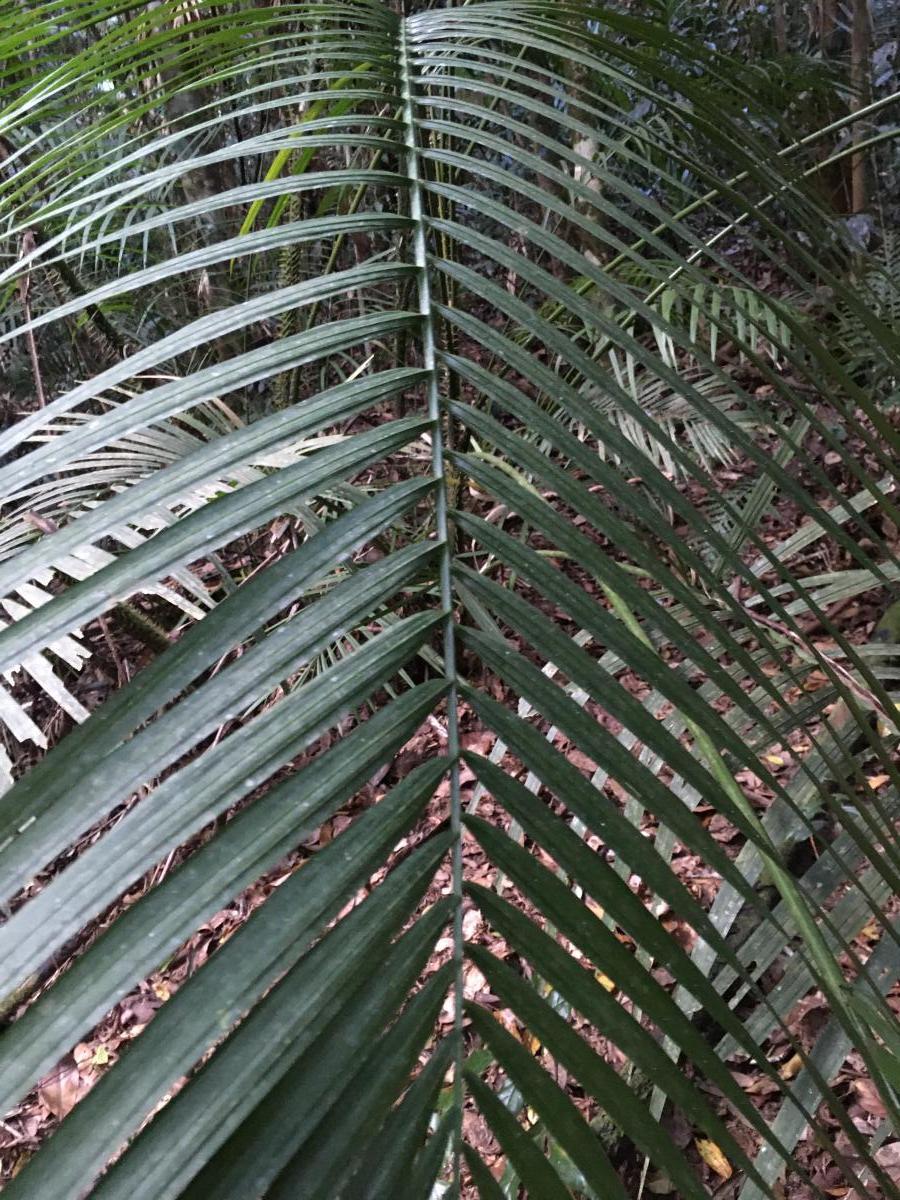
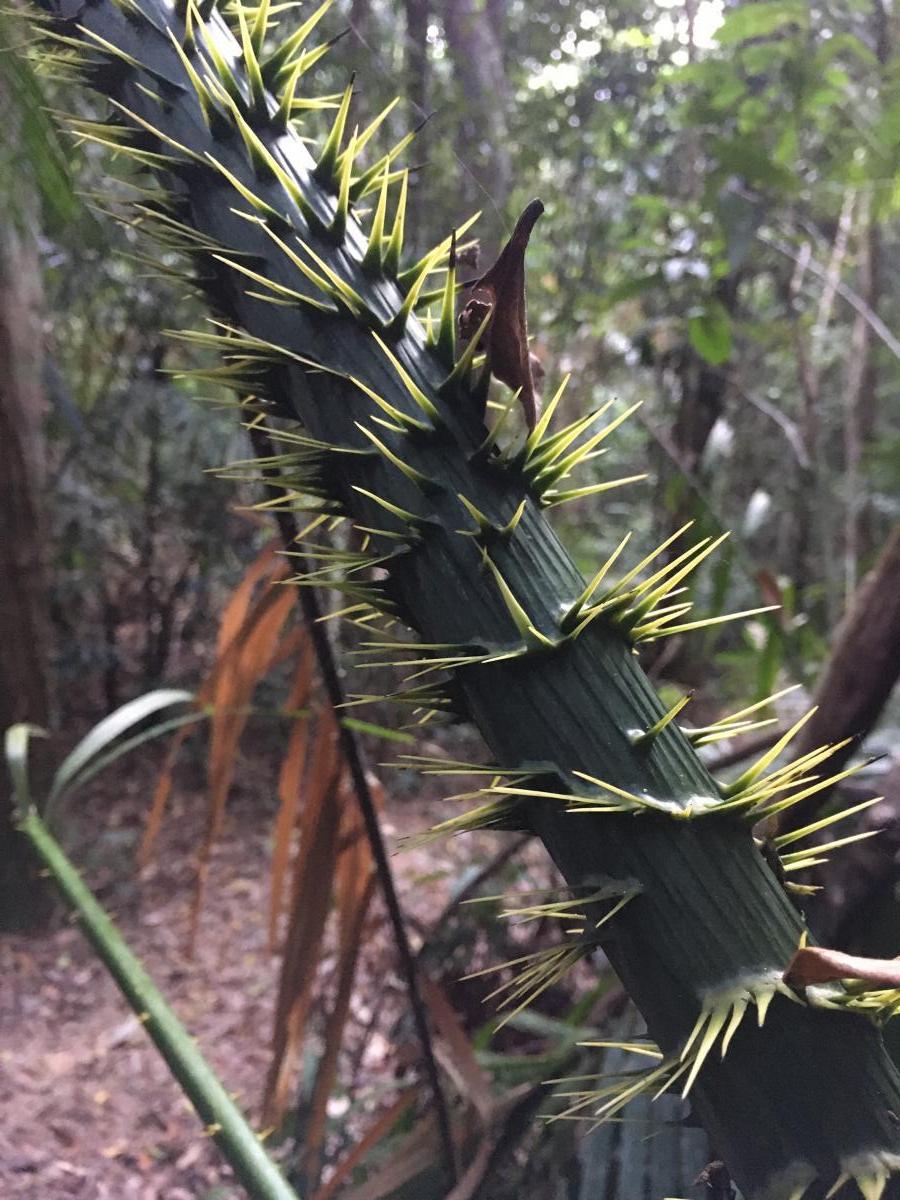
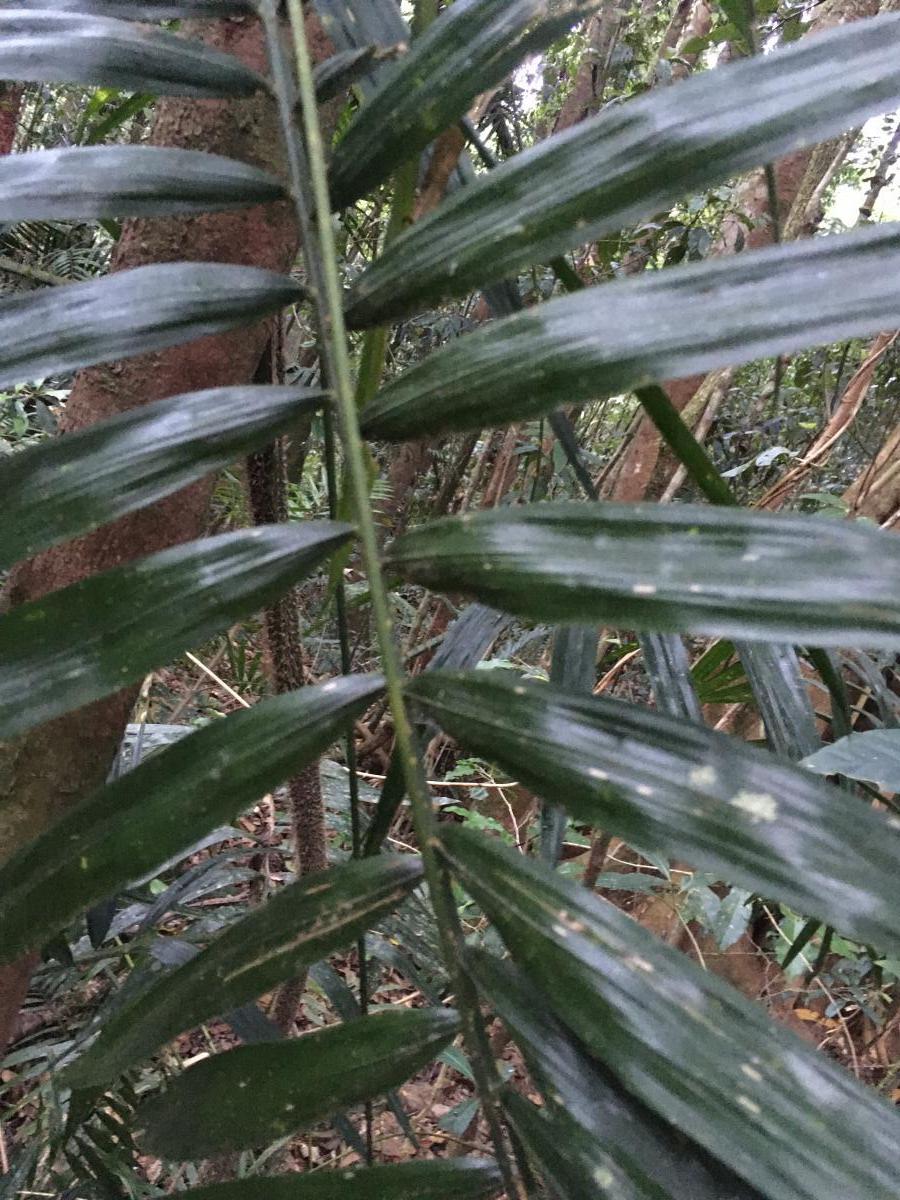
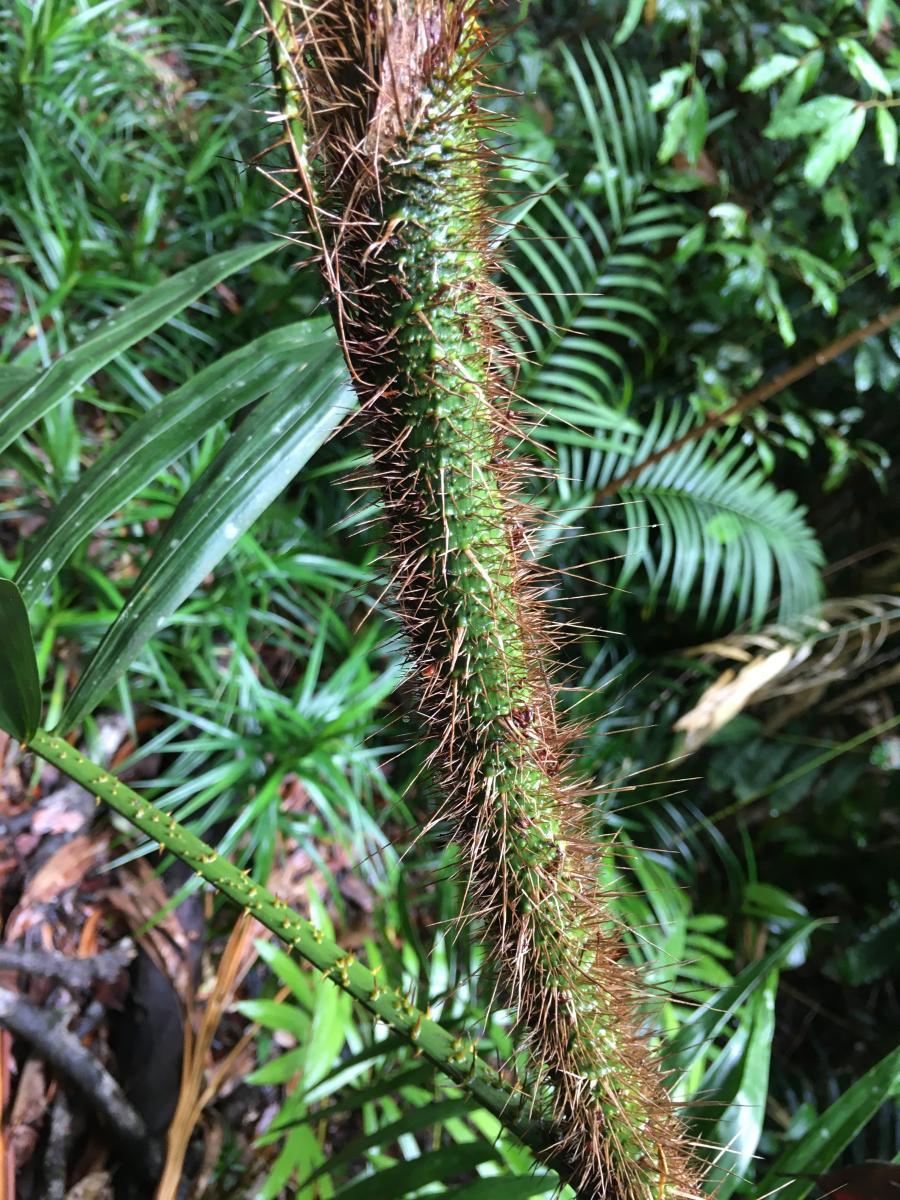
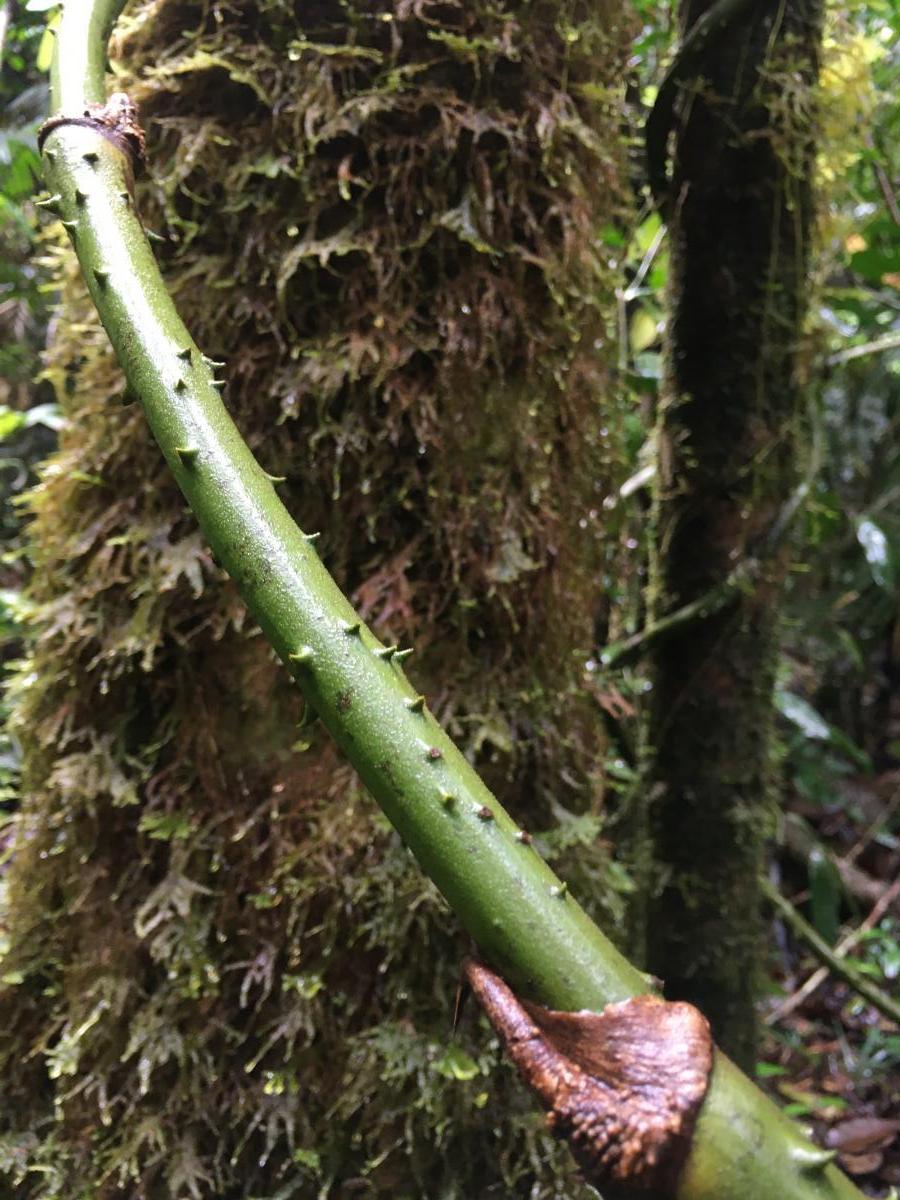
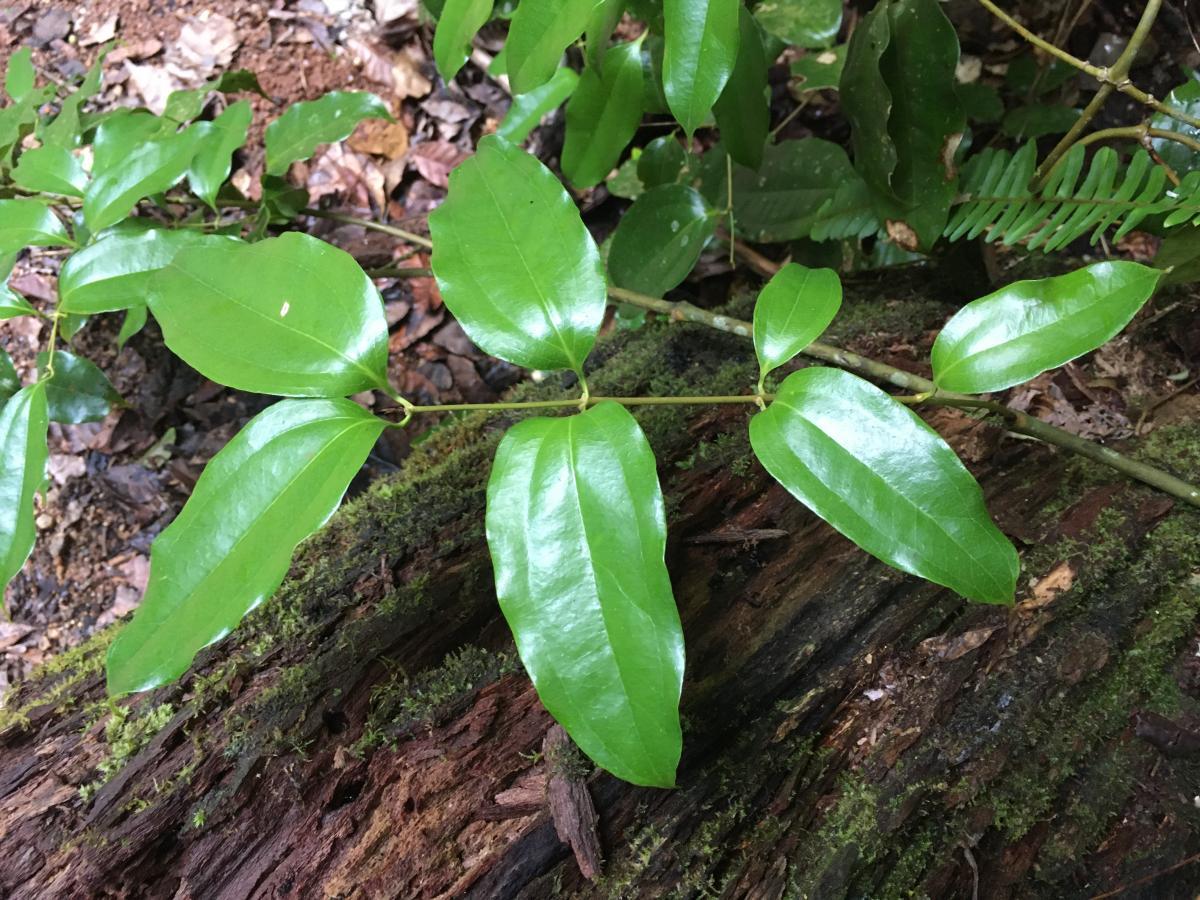
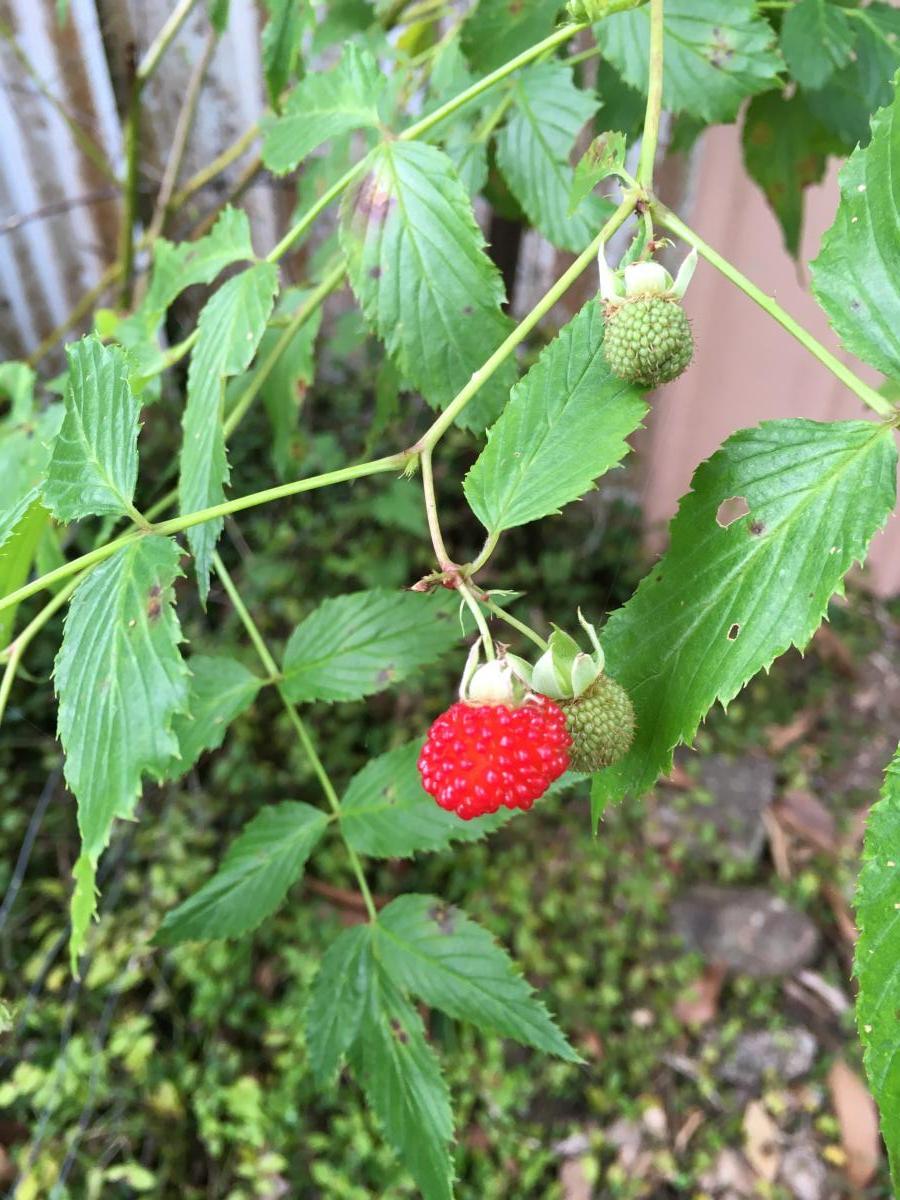
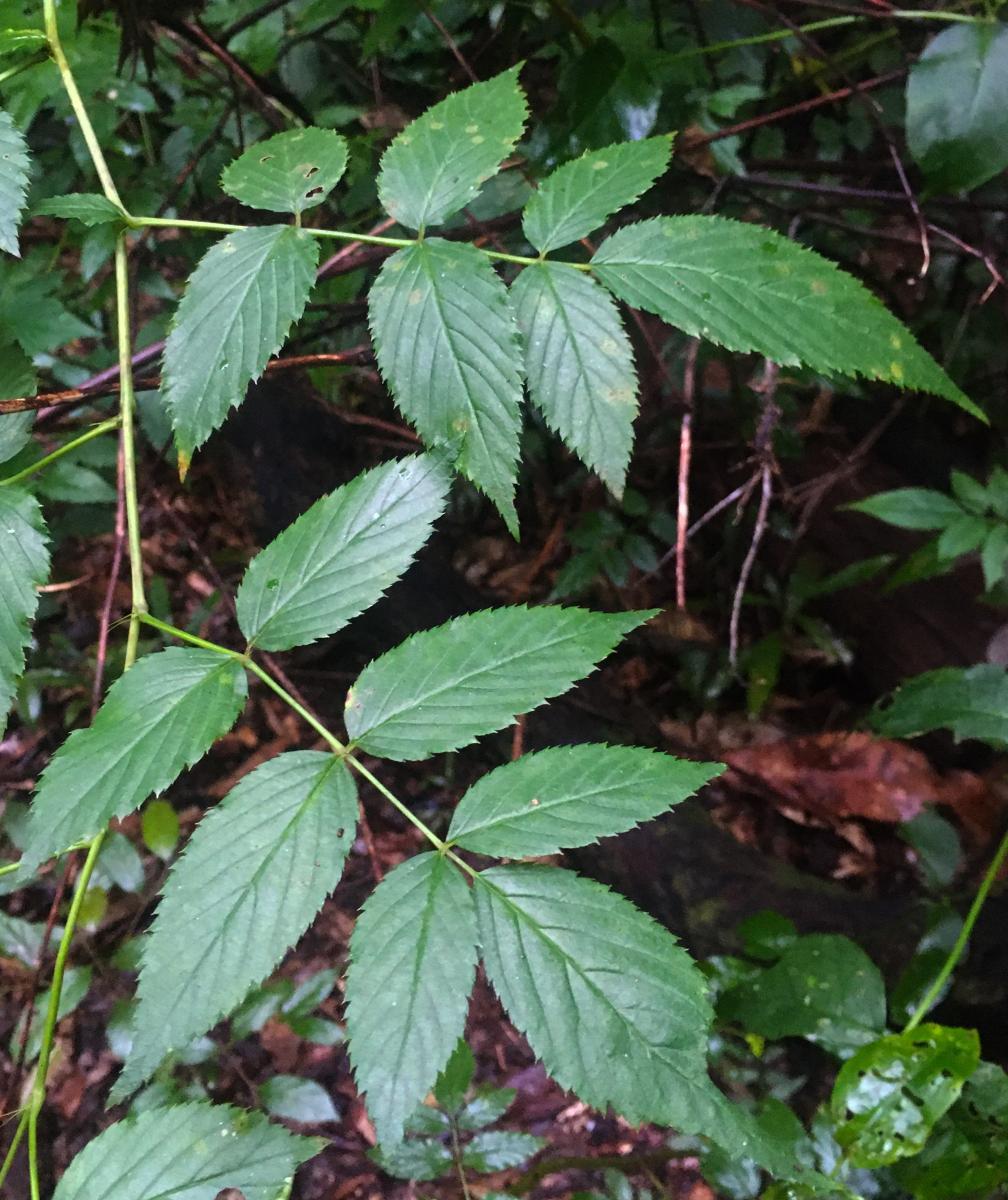











.jpg?bwg=1590822431)

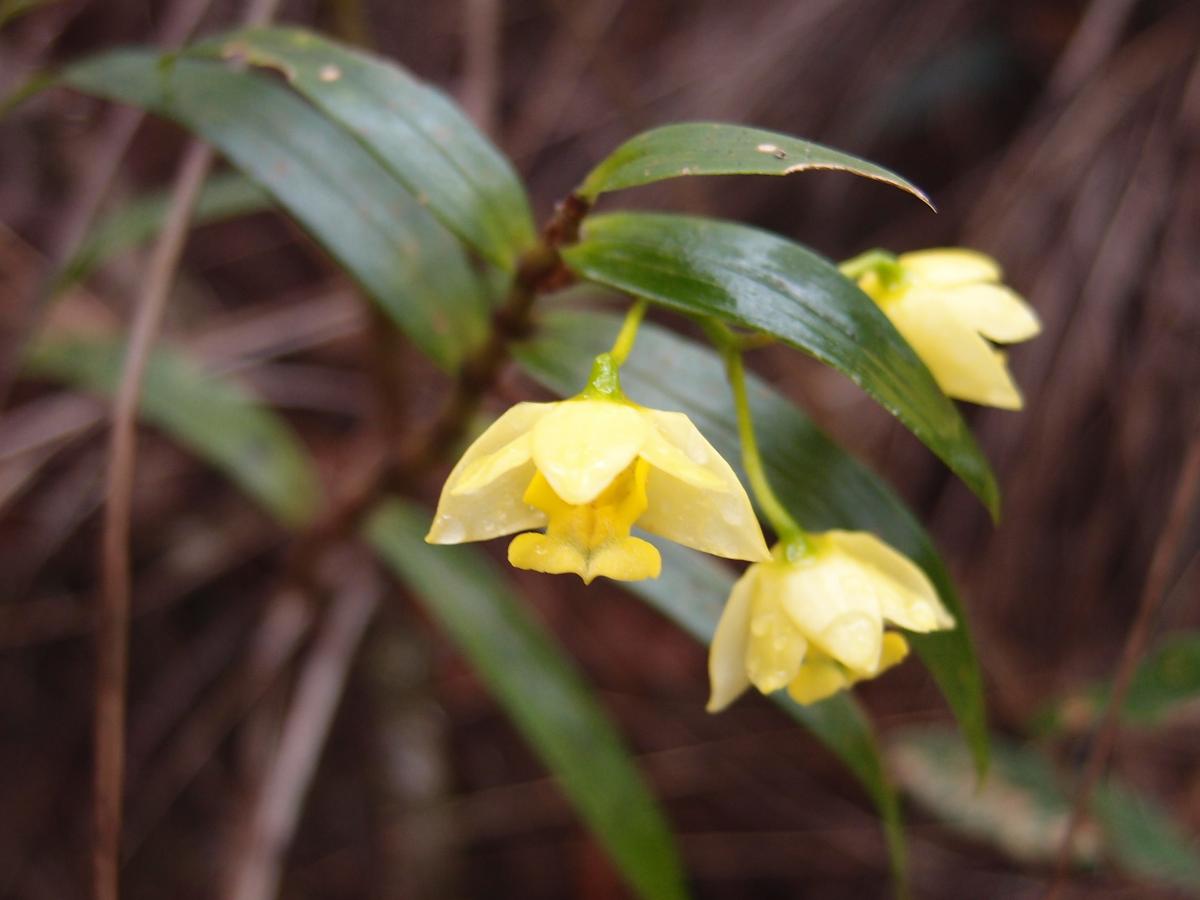
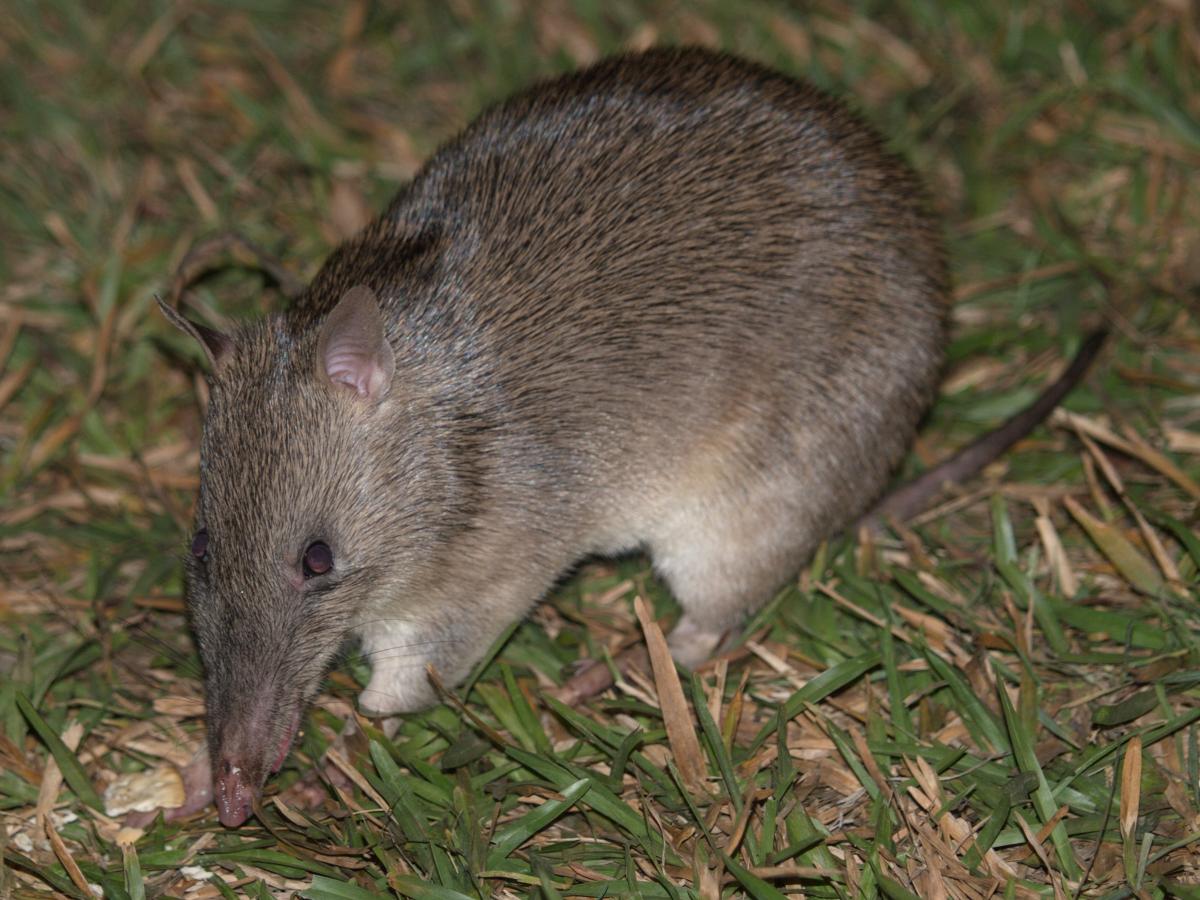
_Creative_Commons.jpg?bwg=1589850038)
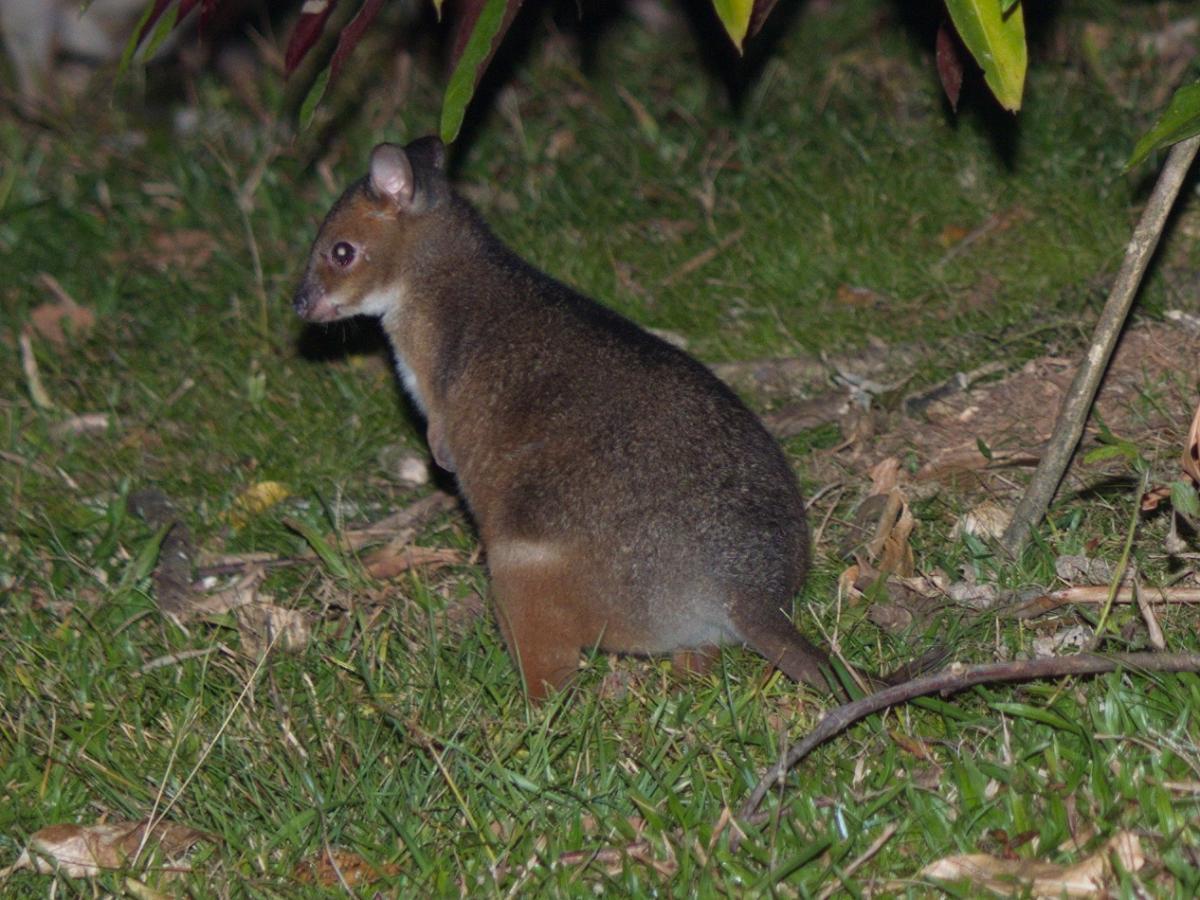
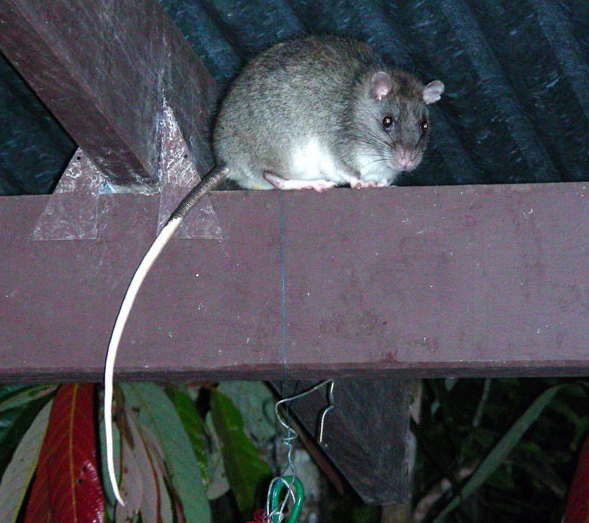


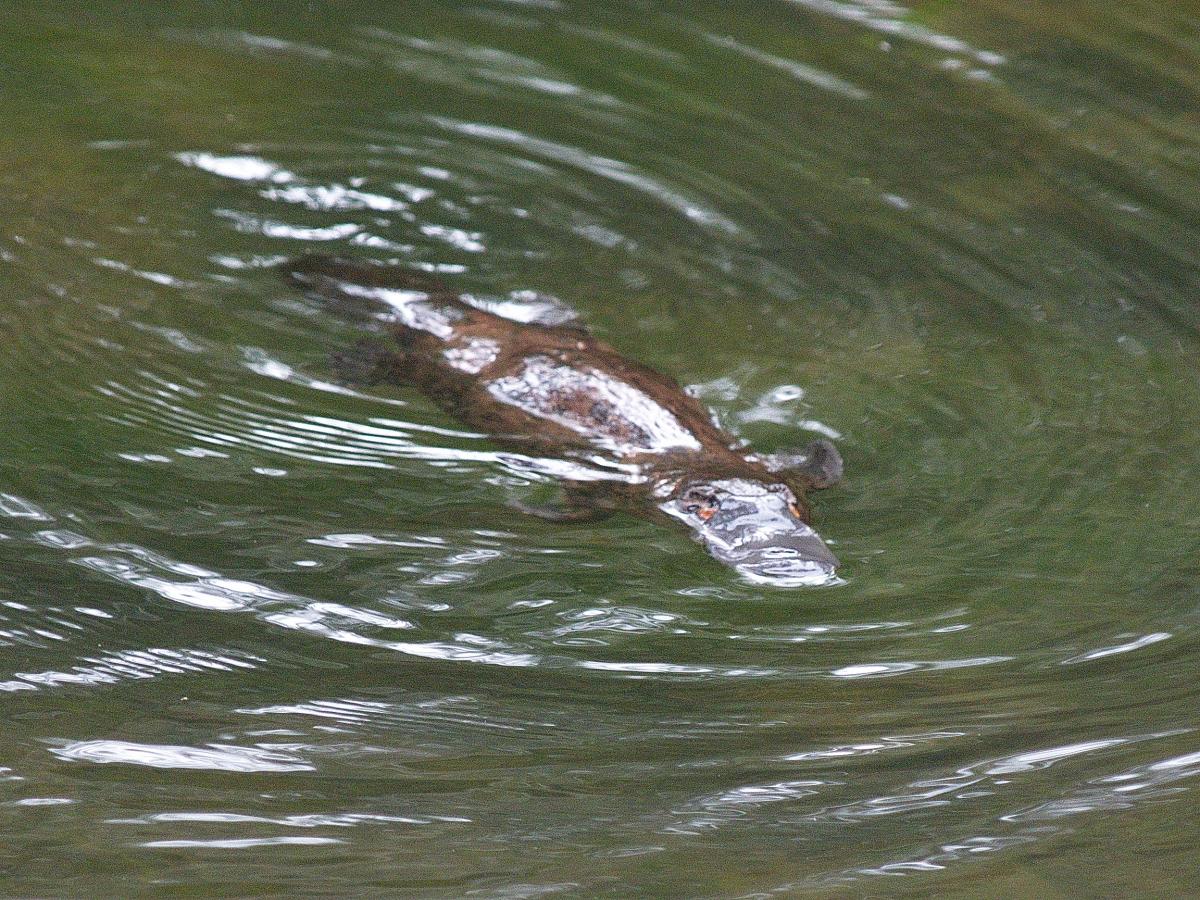
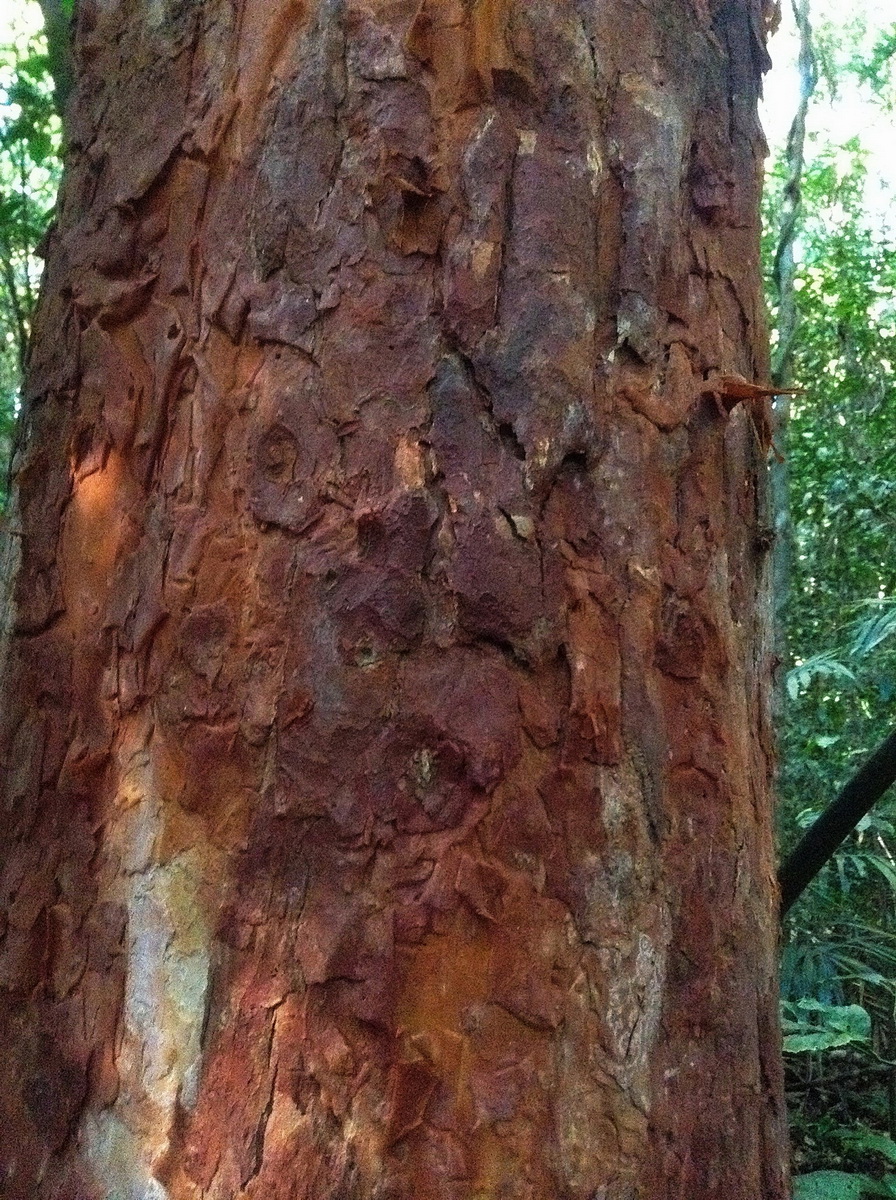
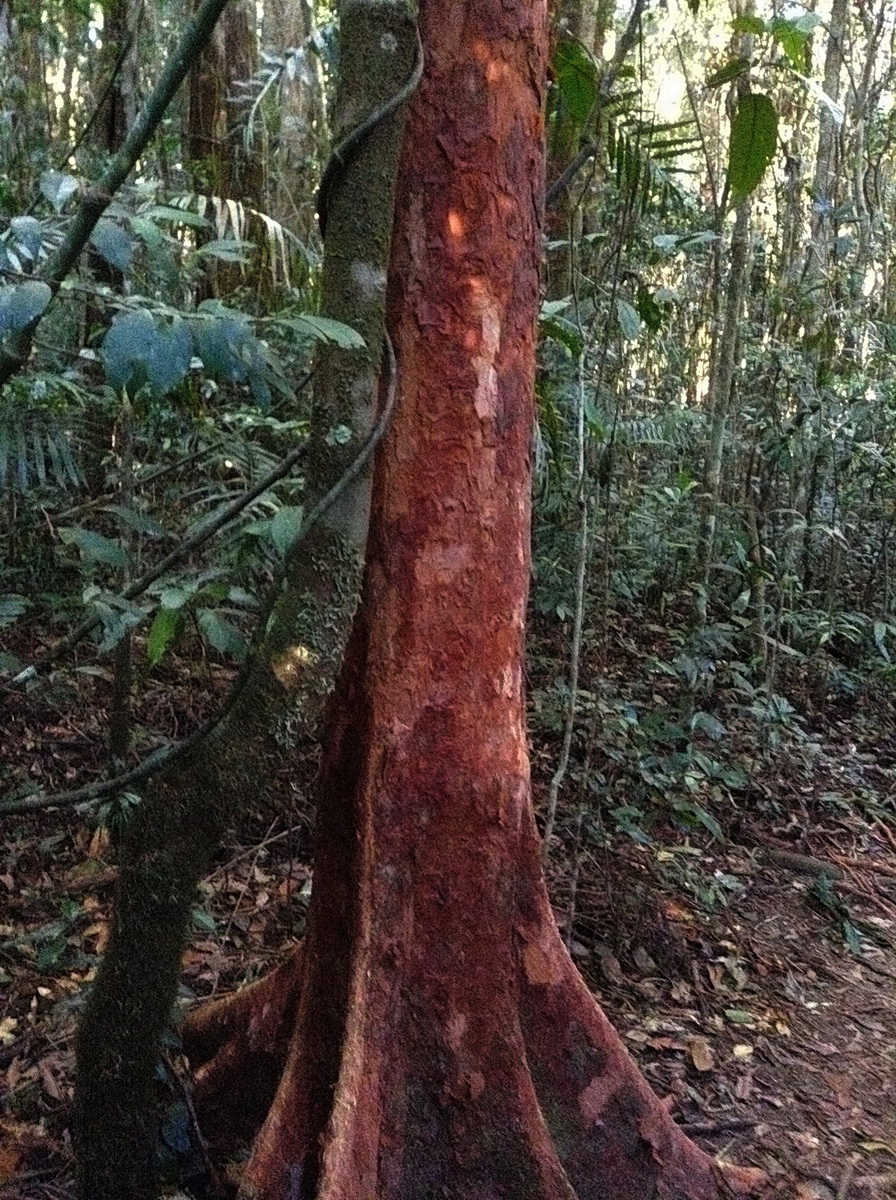
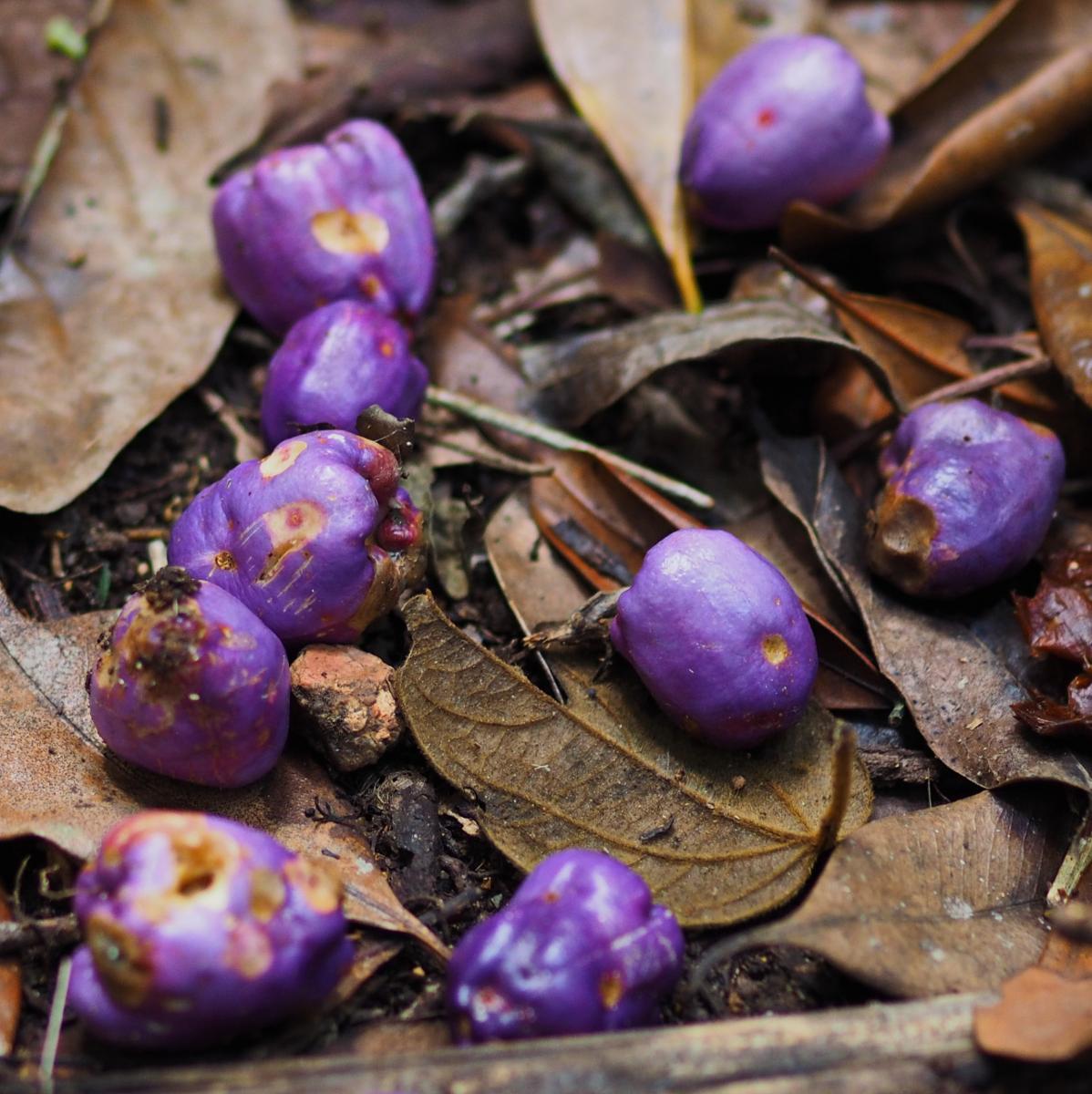
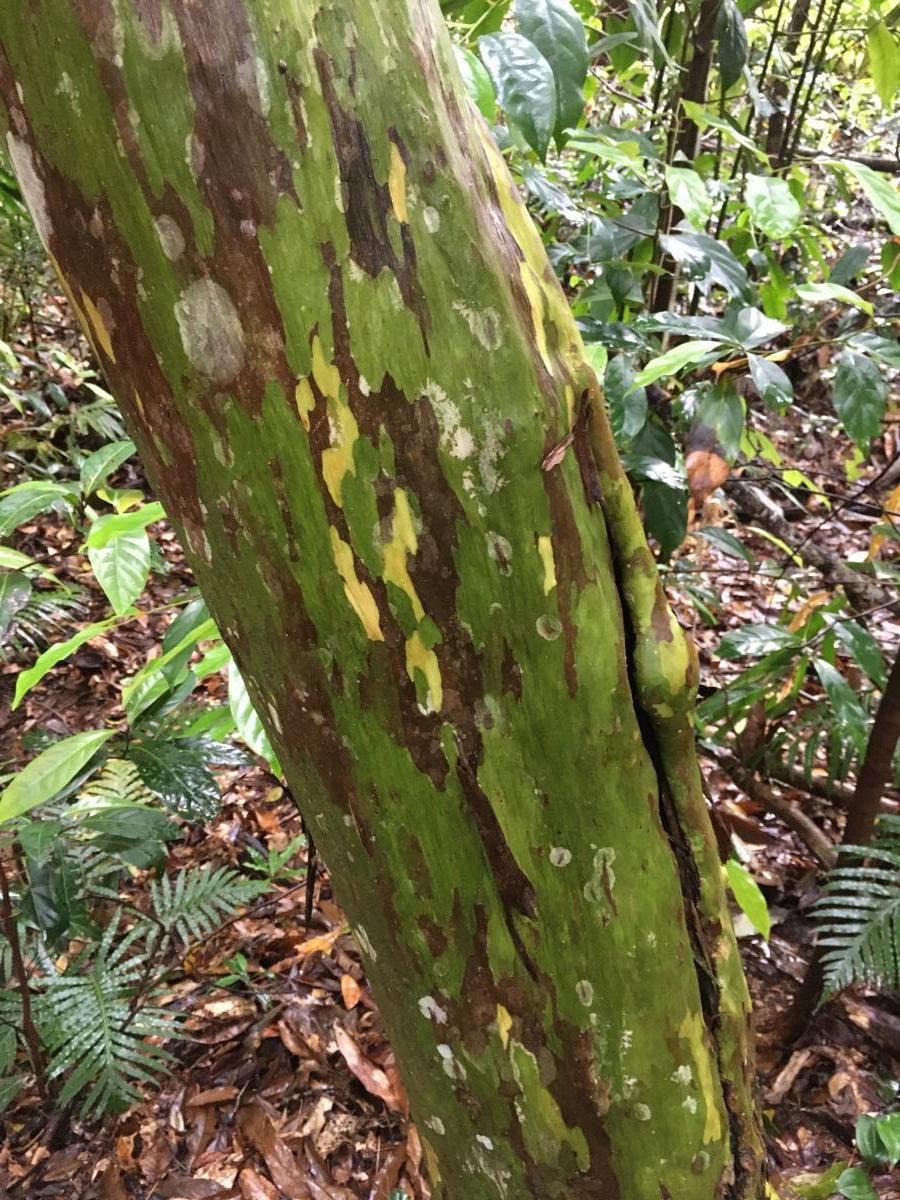
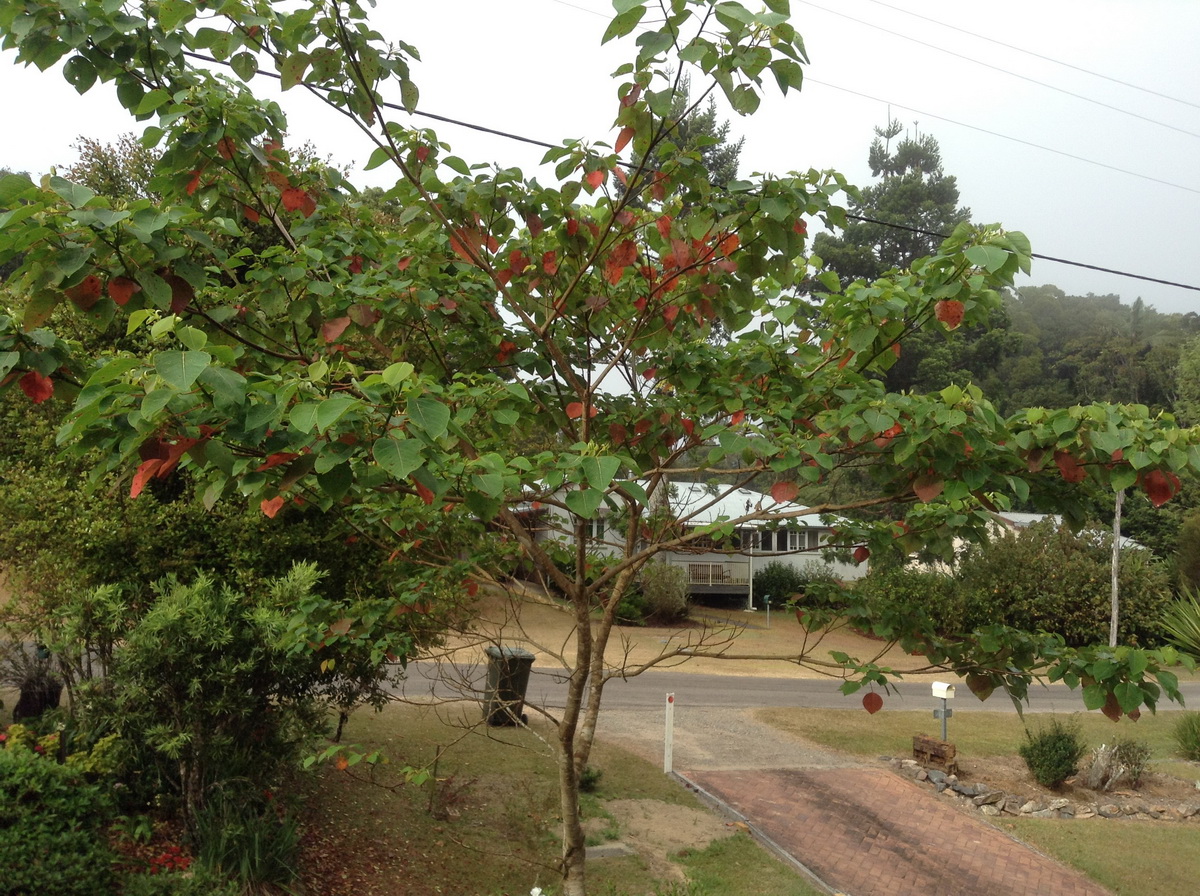
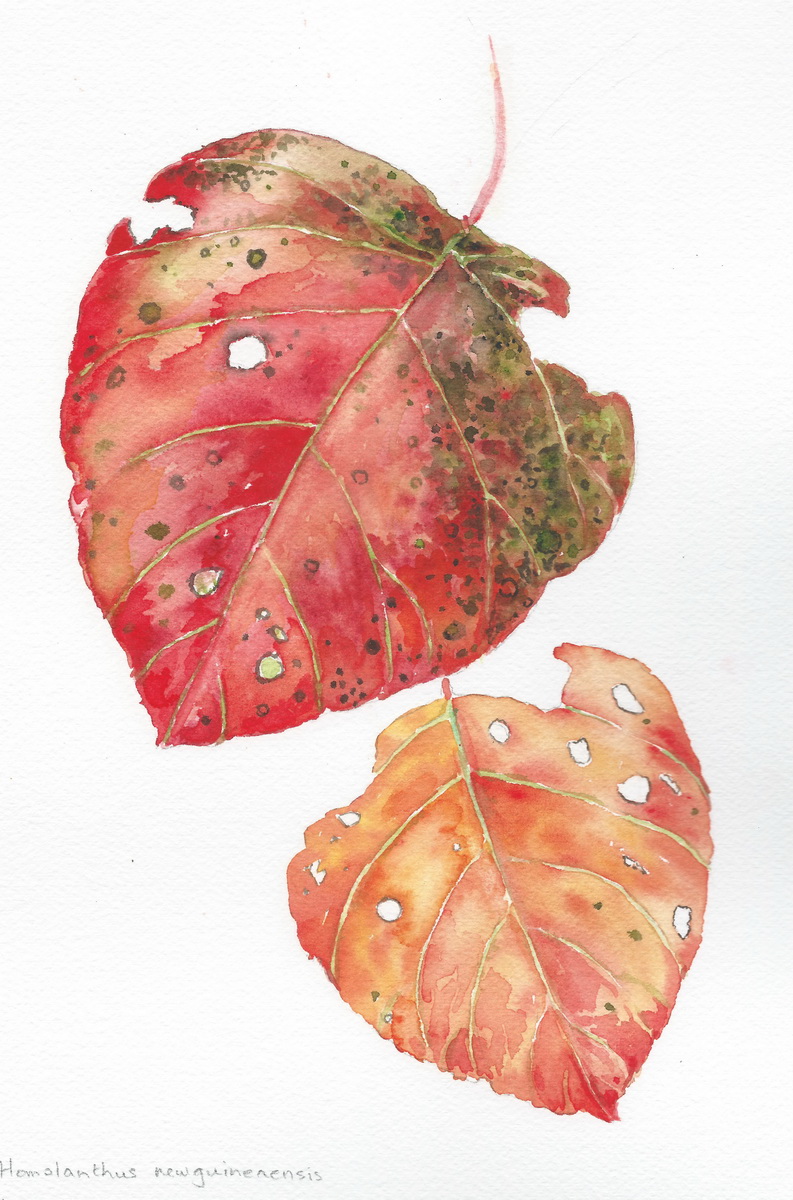
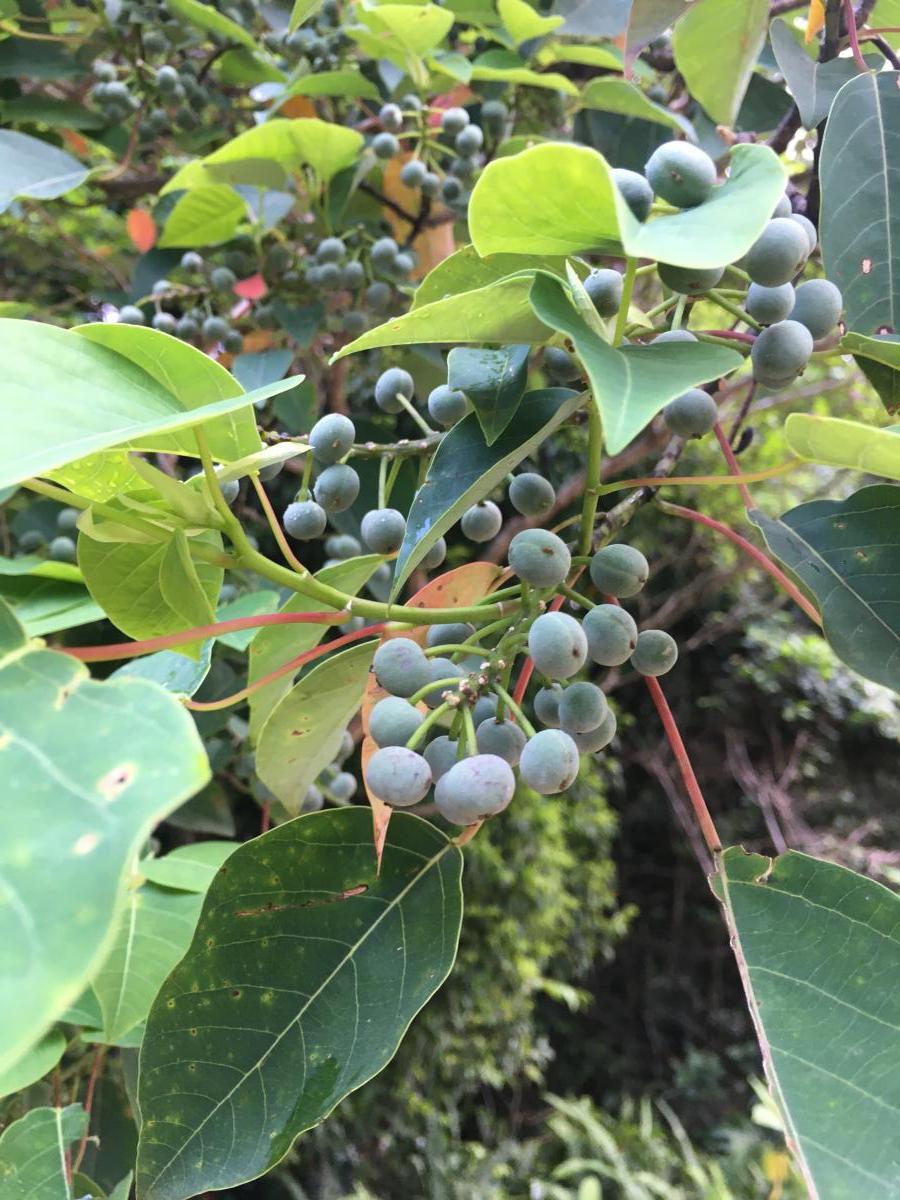
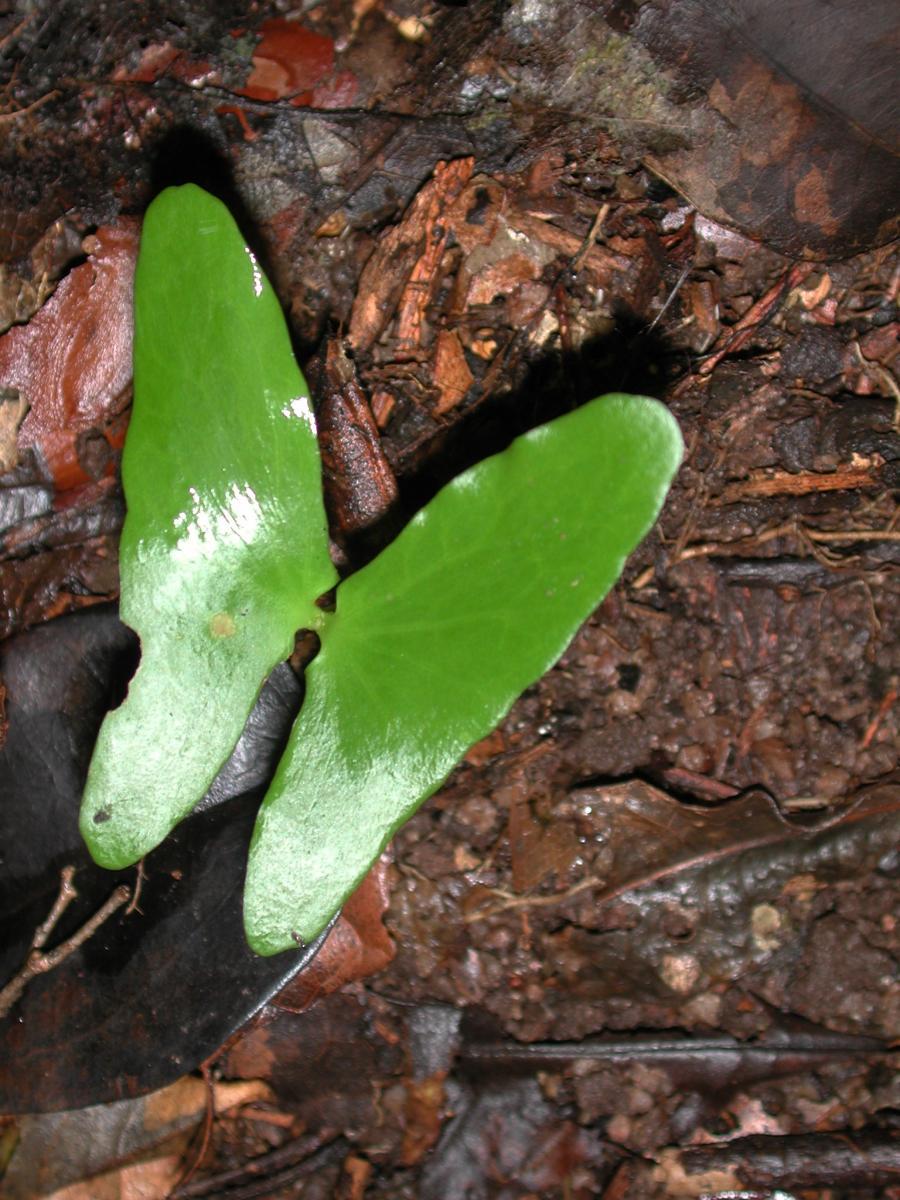
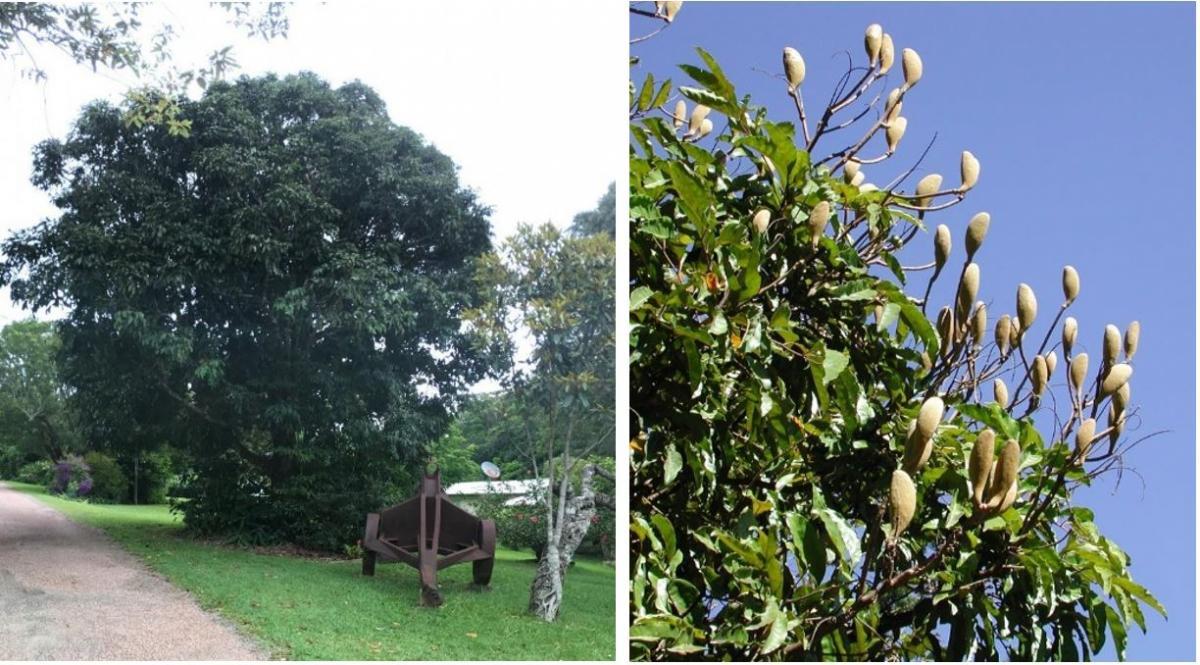
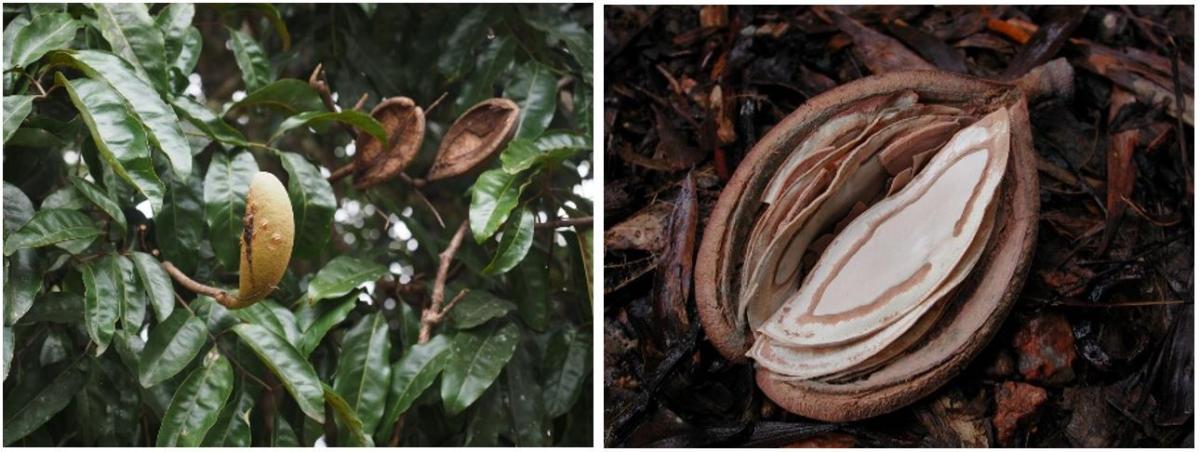
__K._Townsend.jpg?bwg=1588904726)
